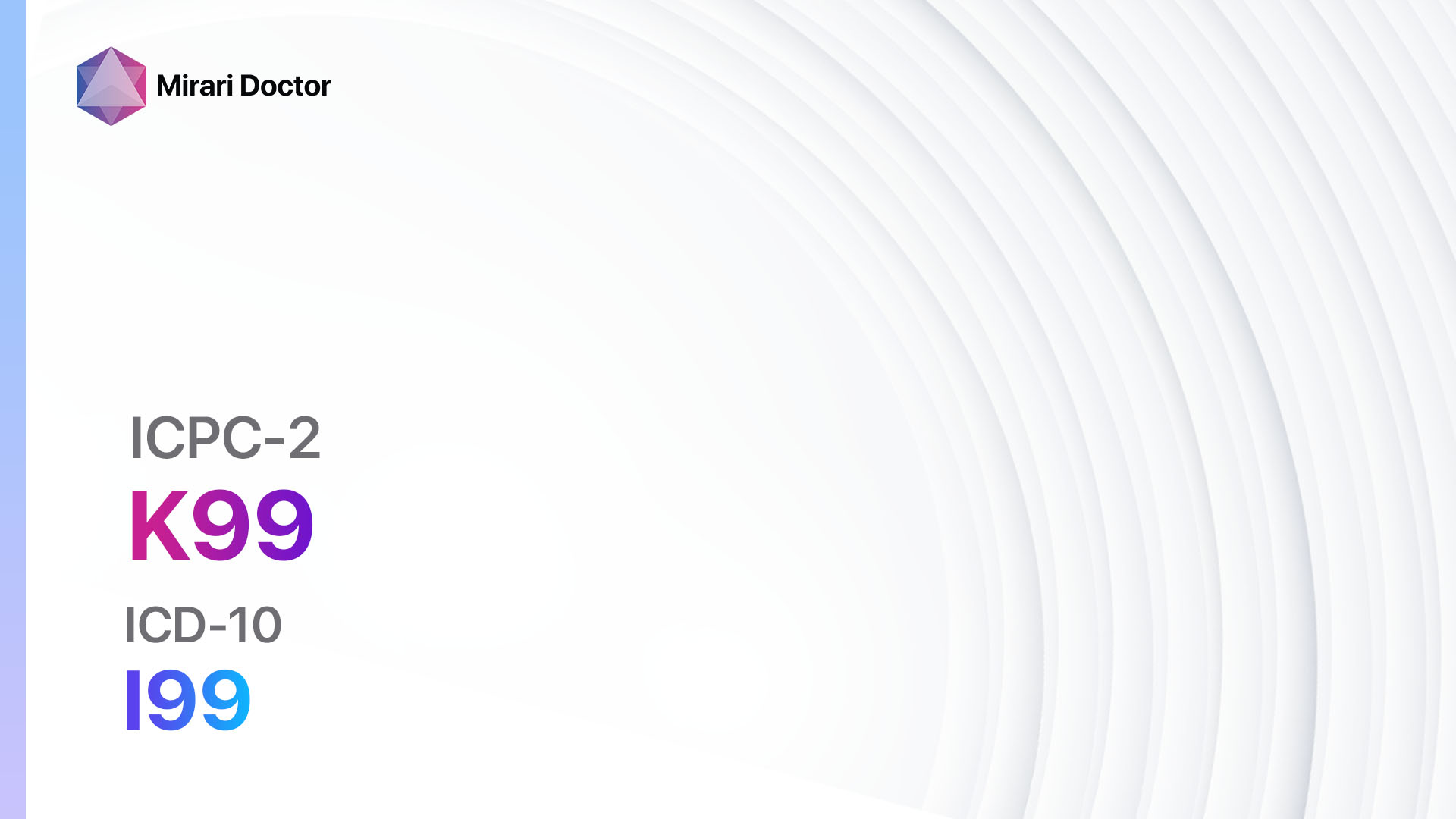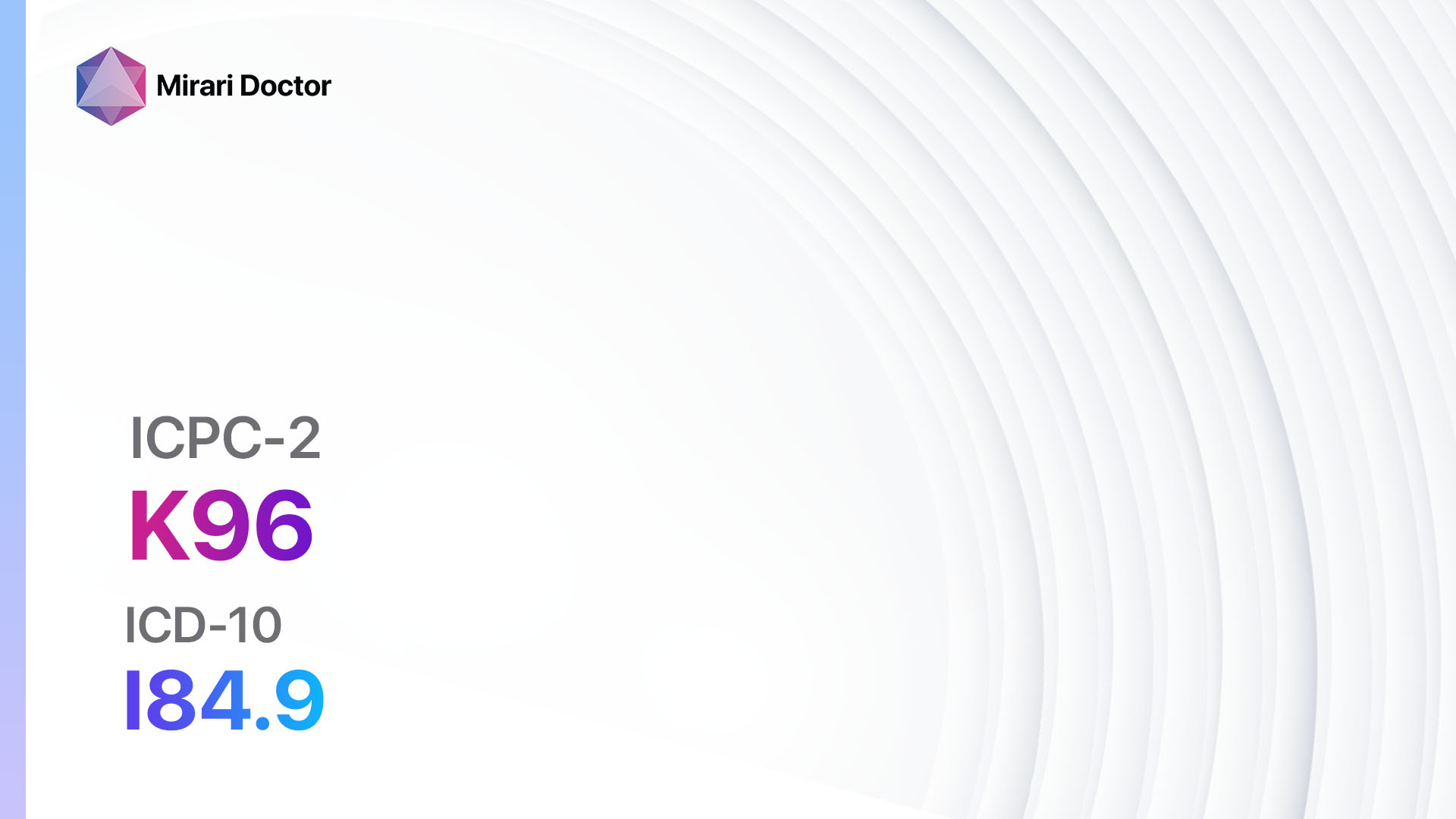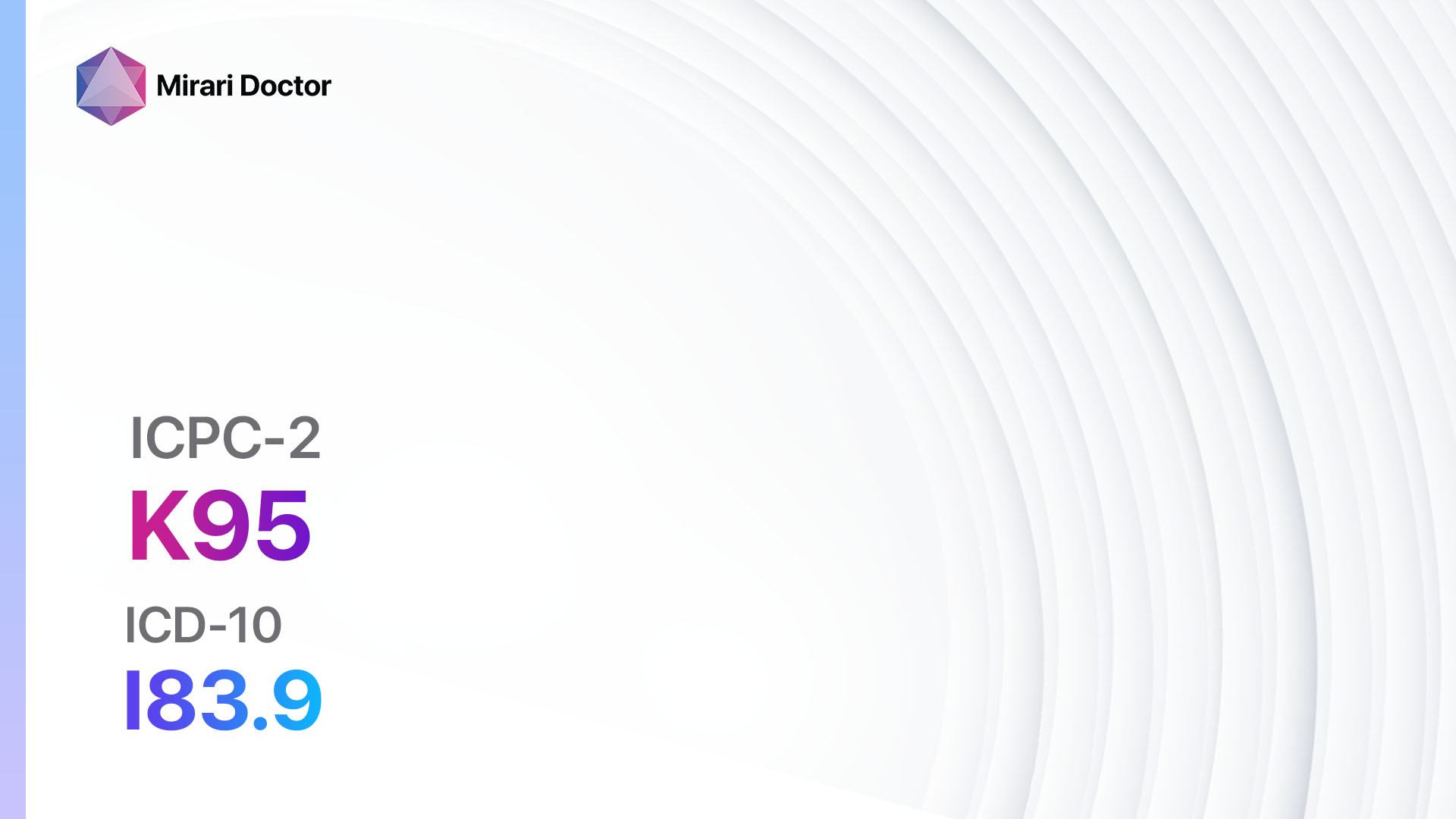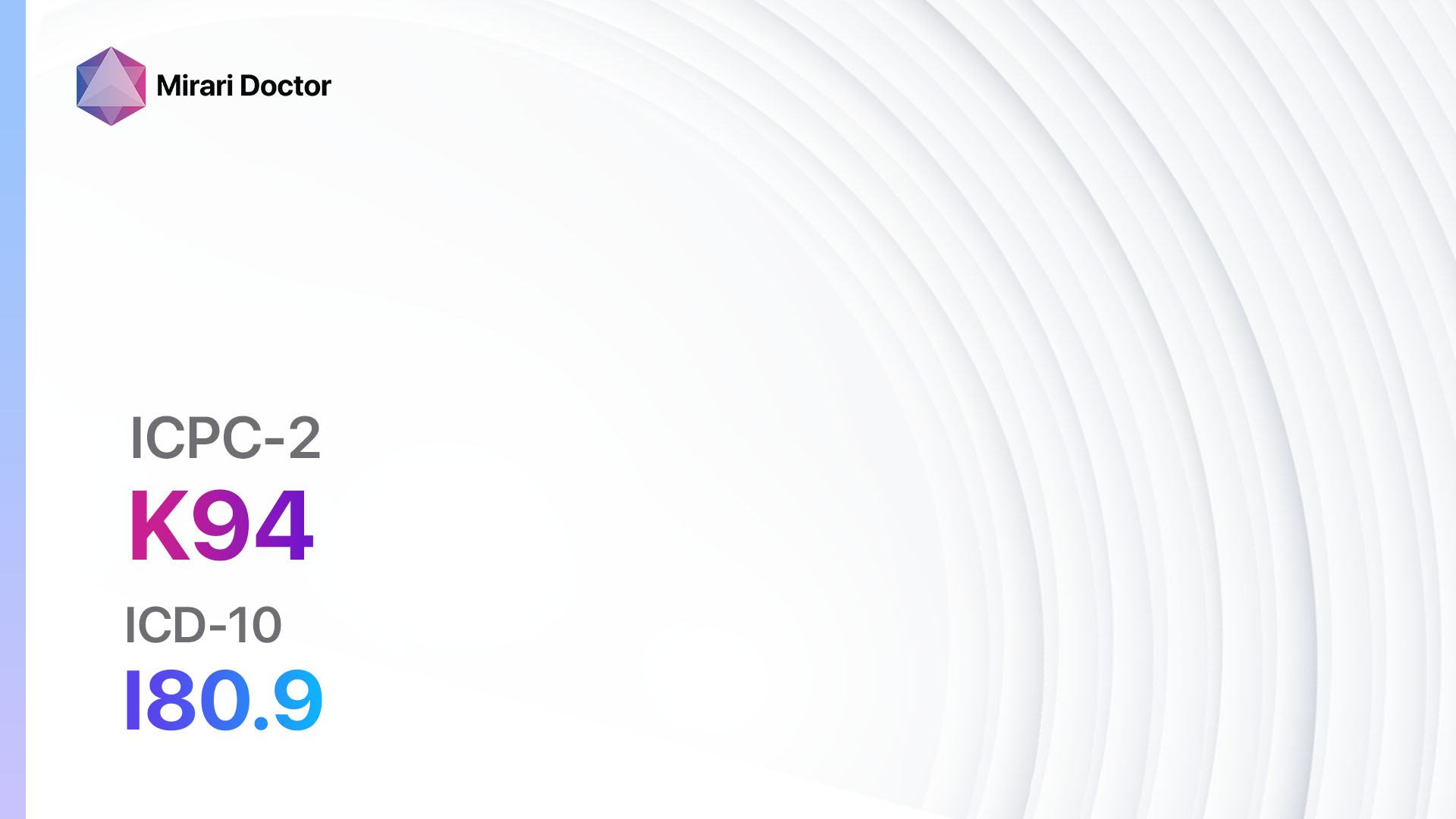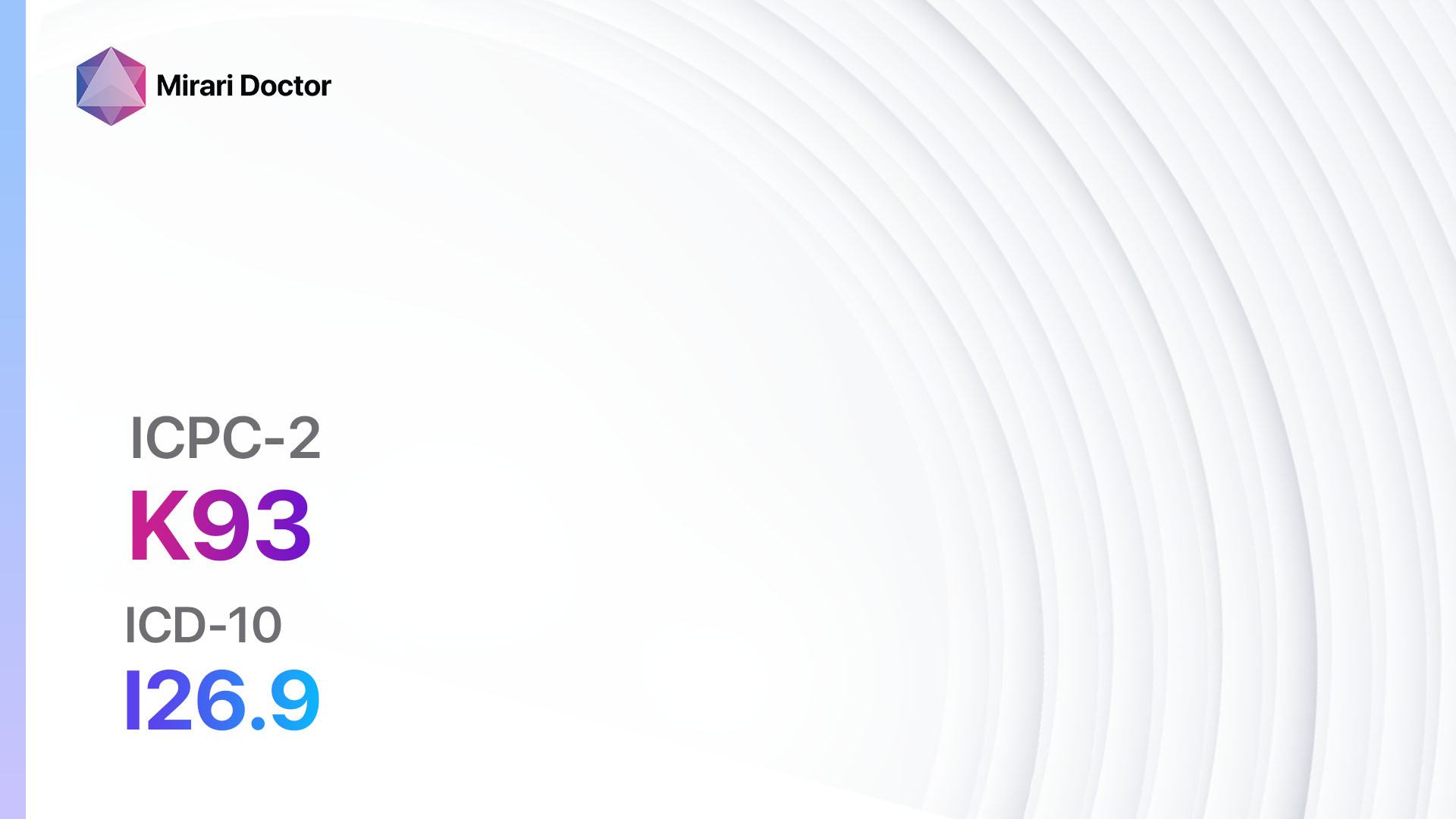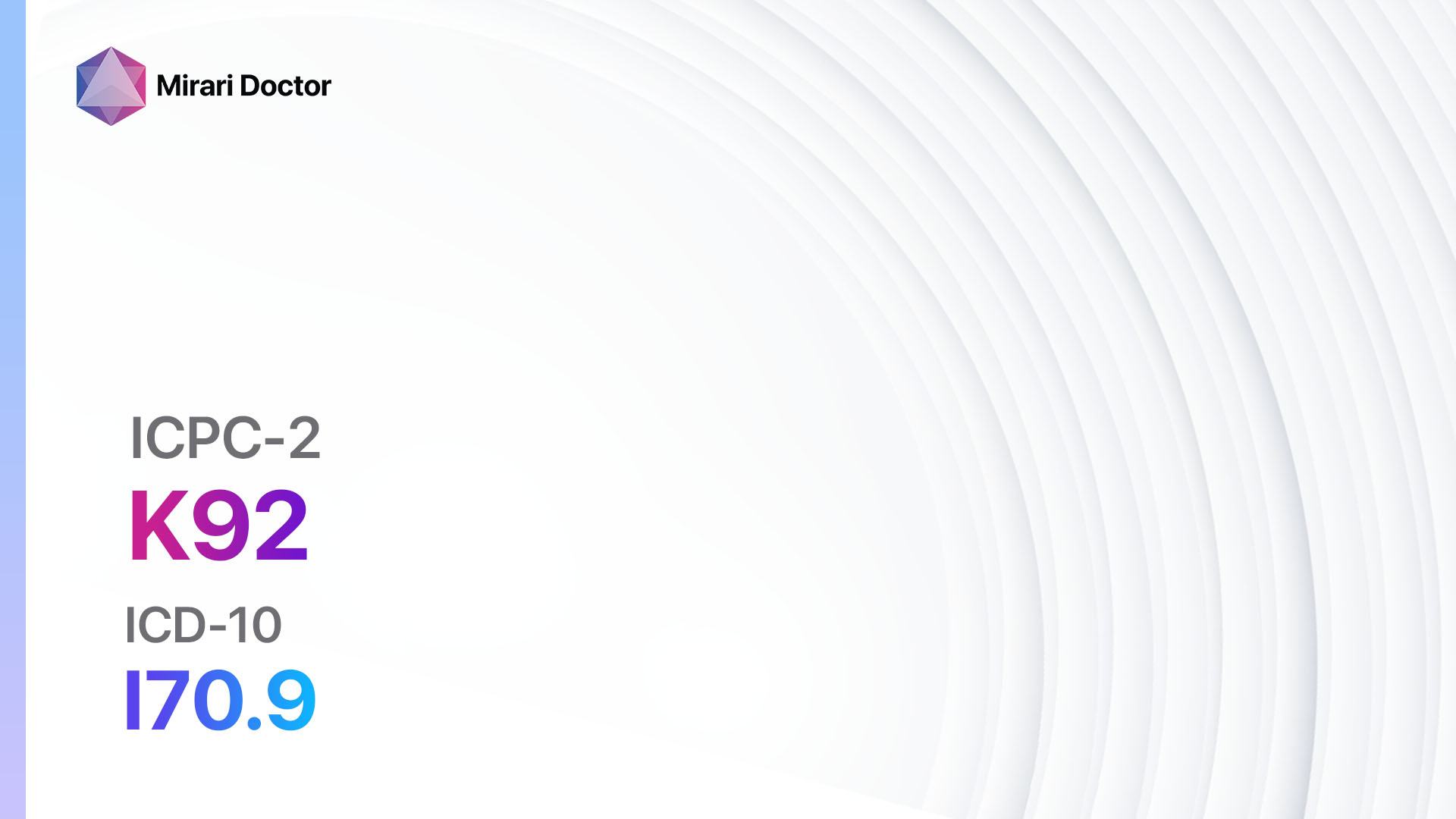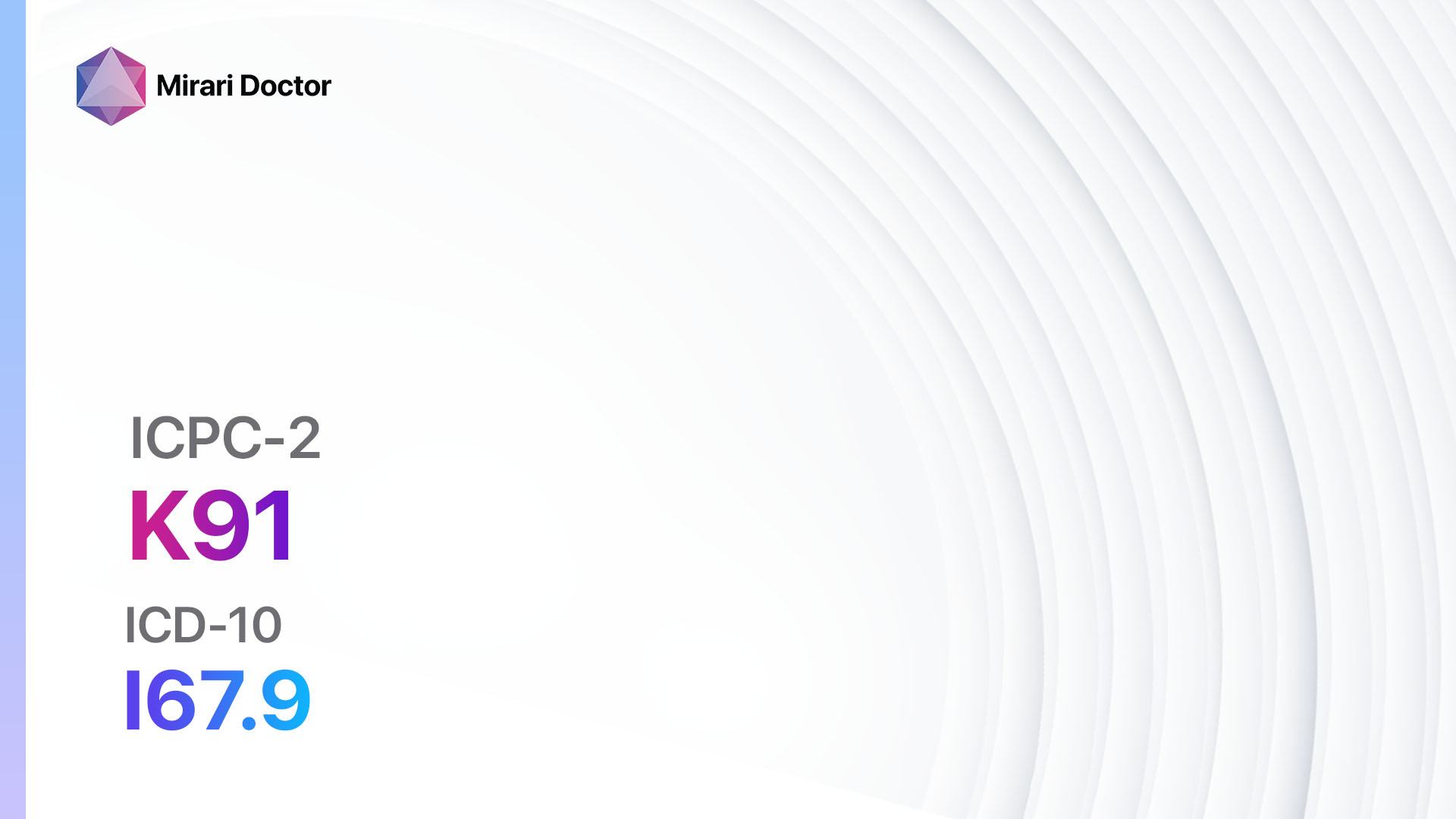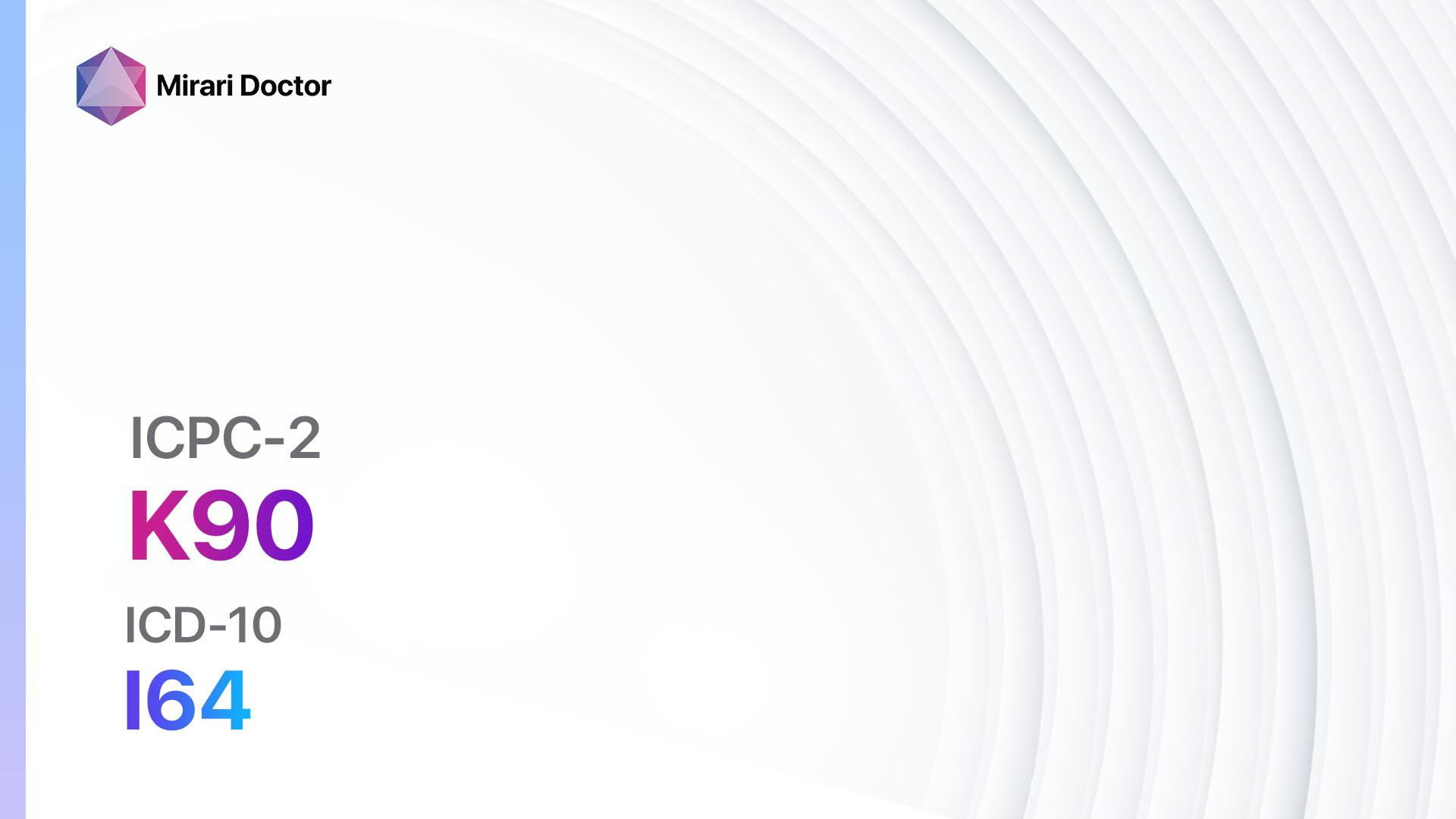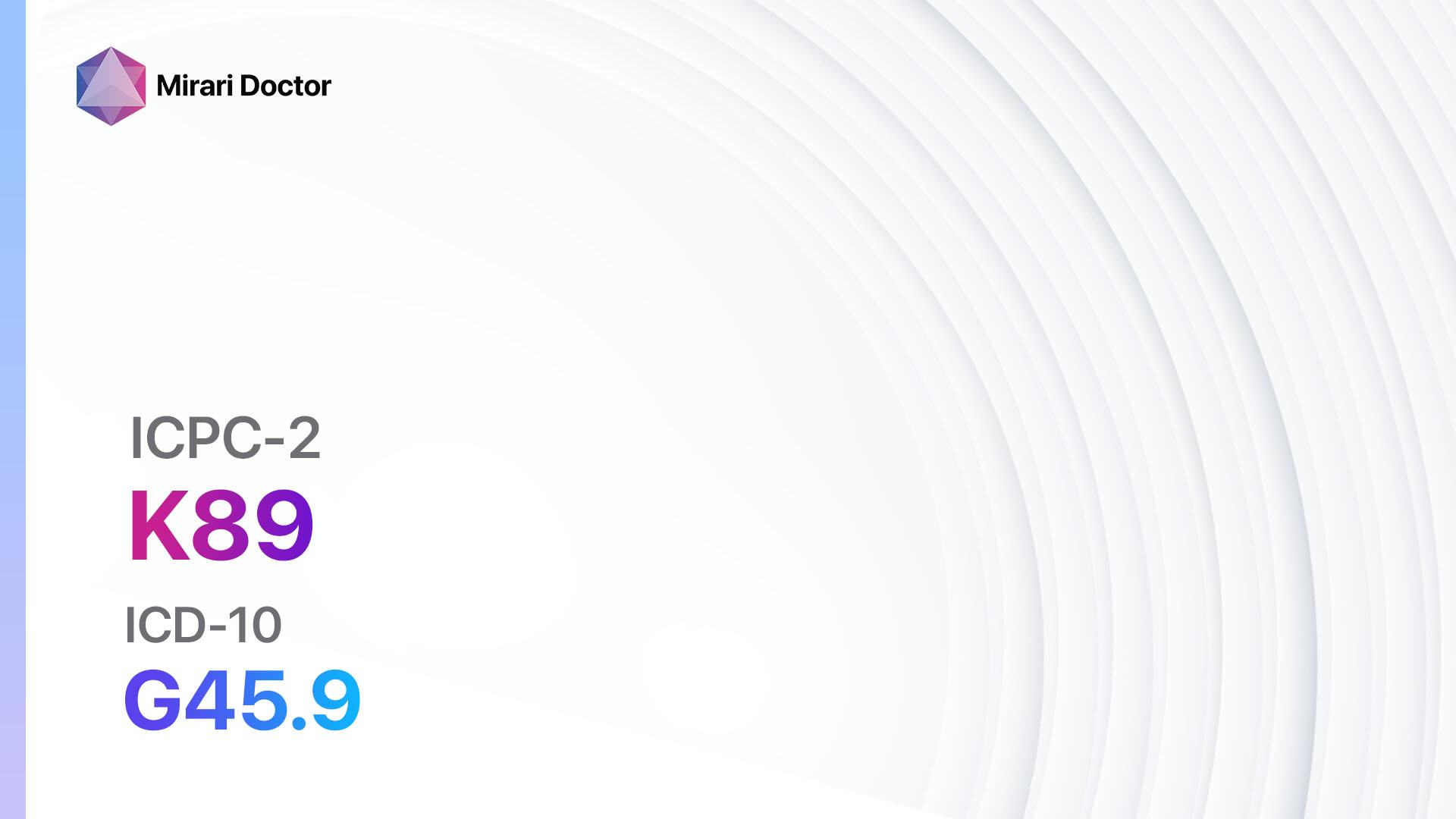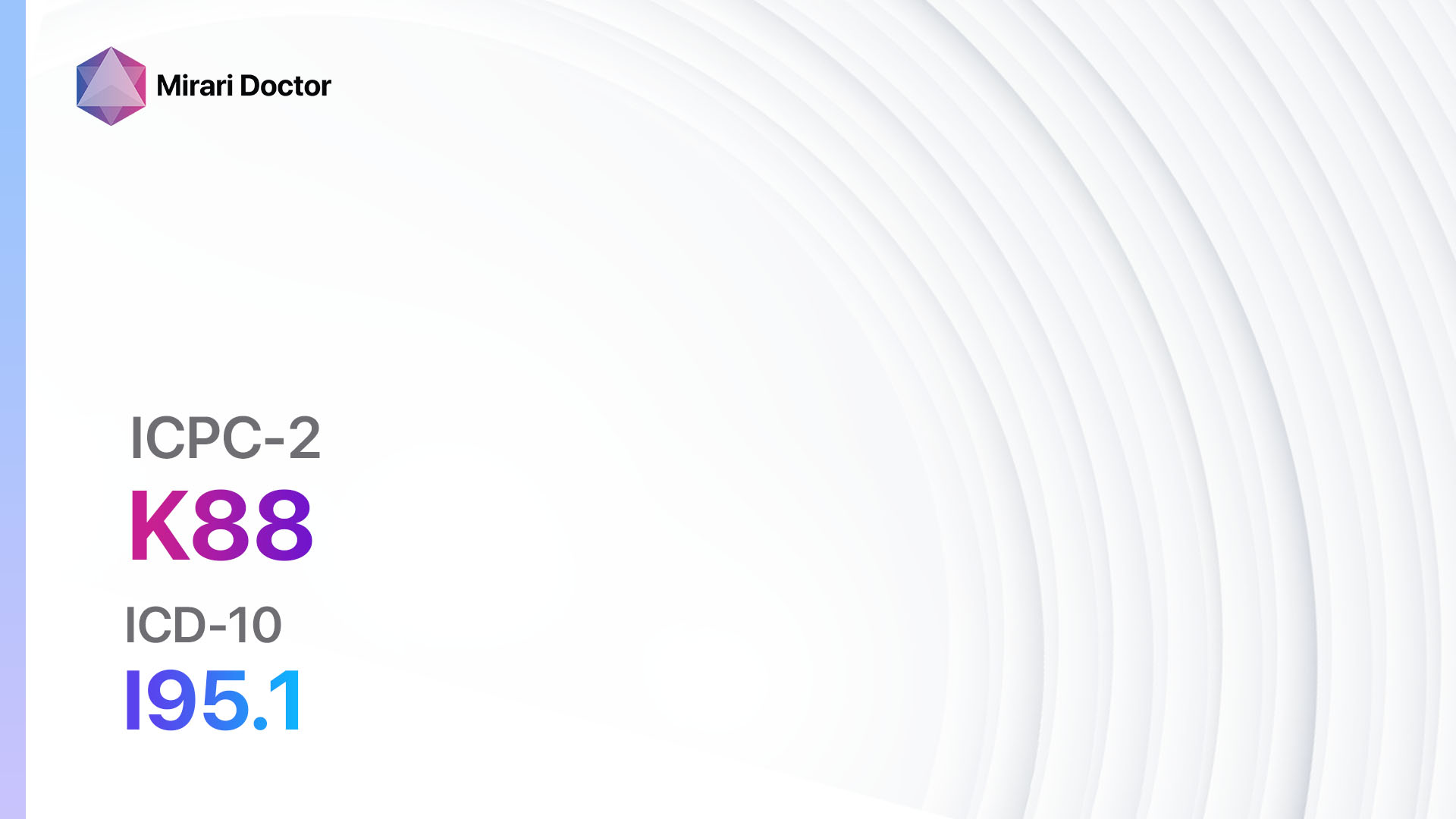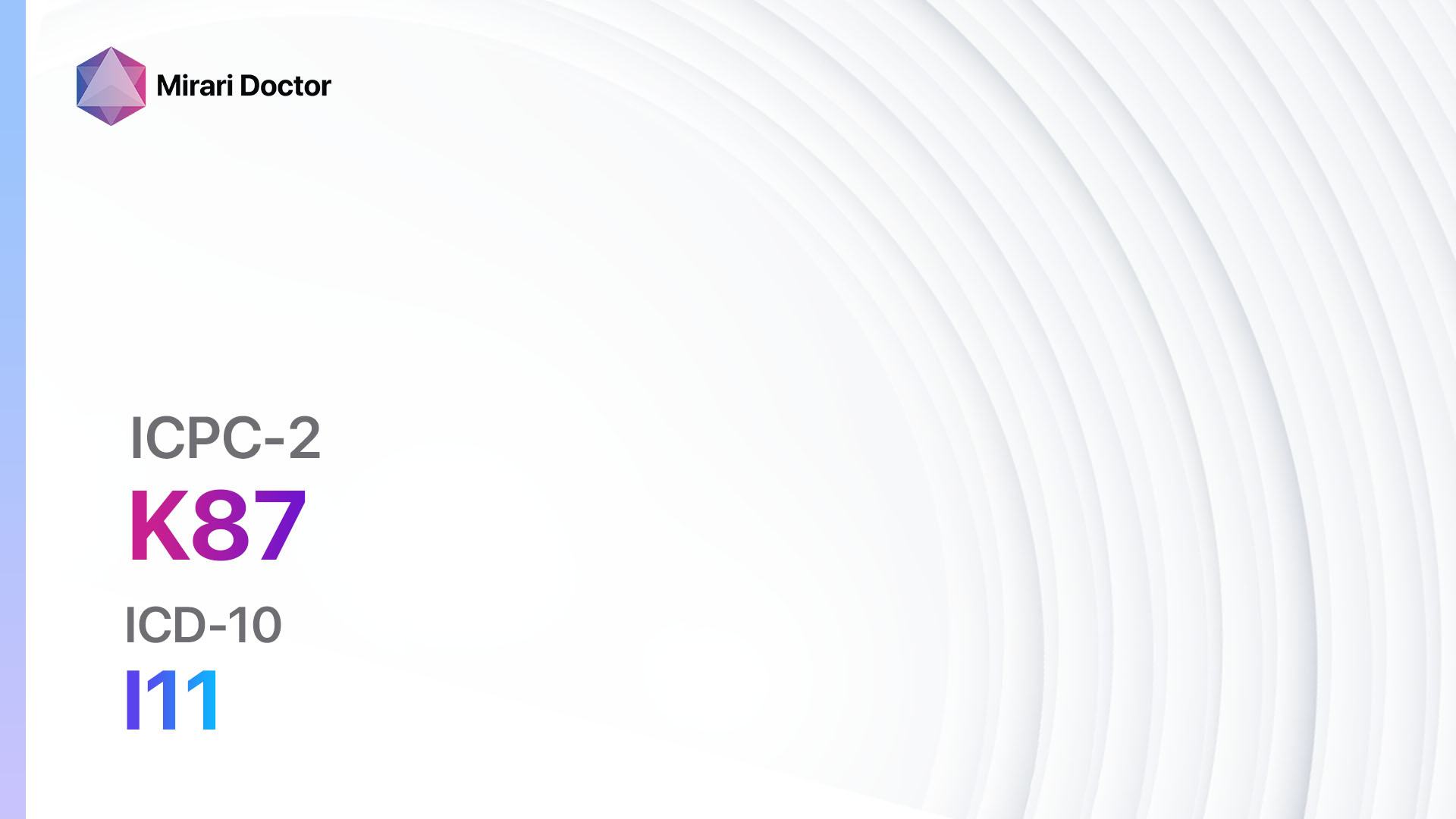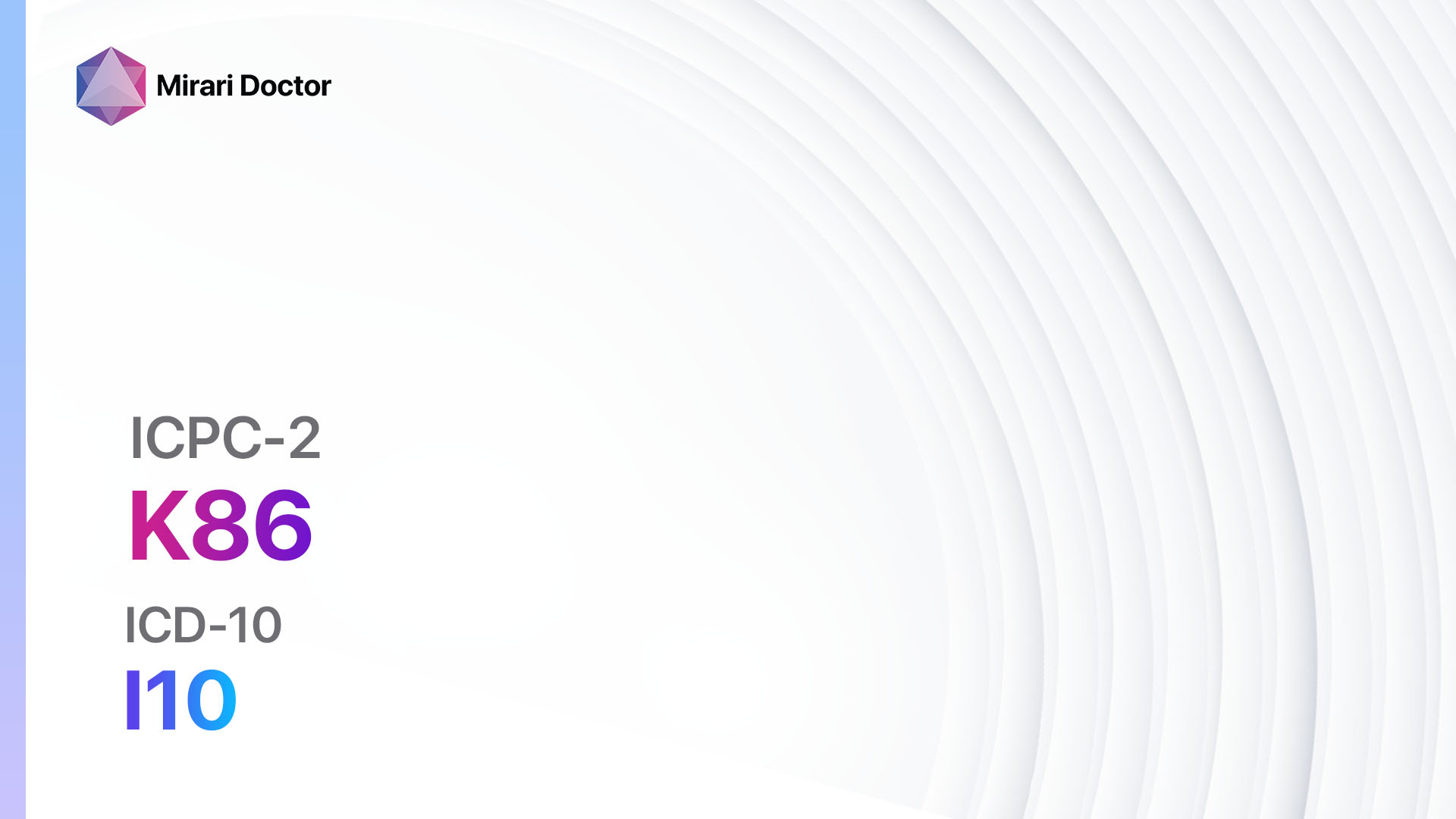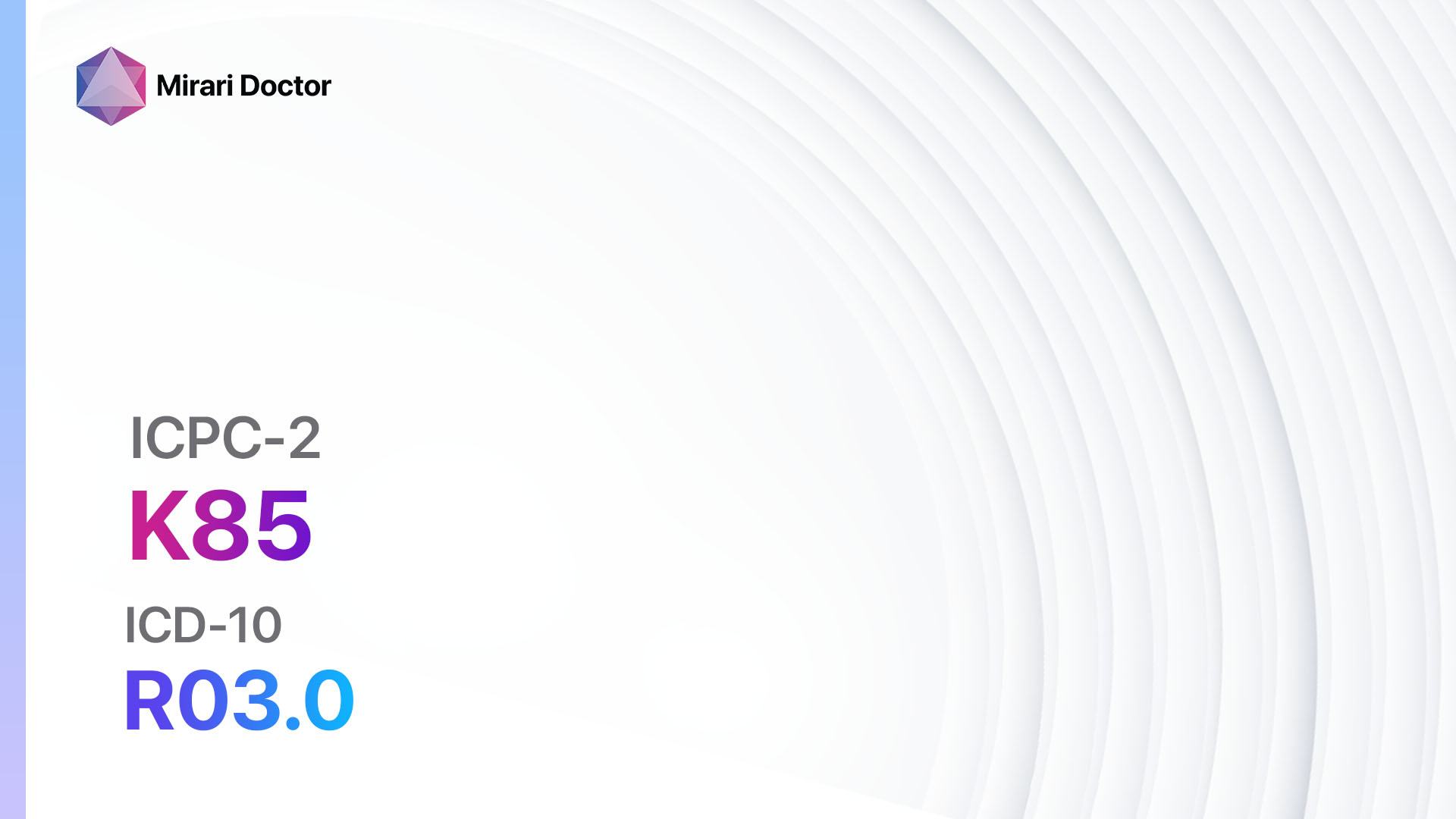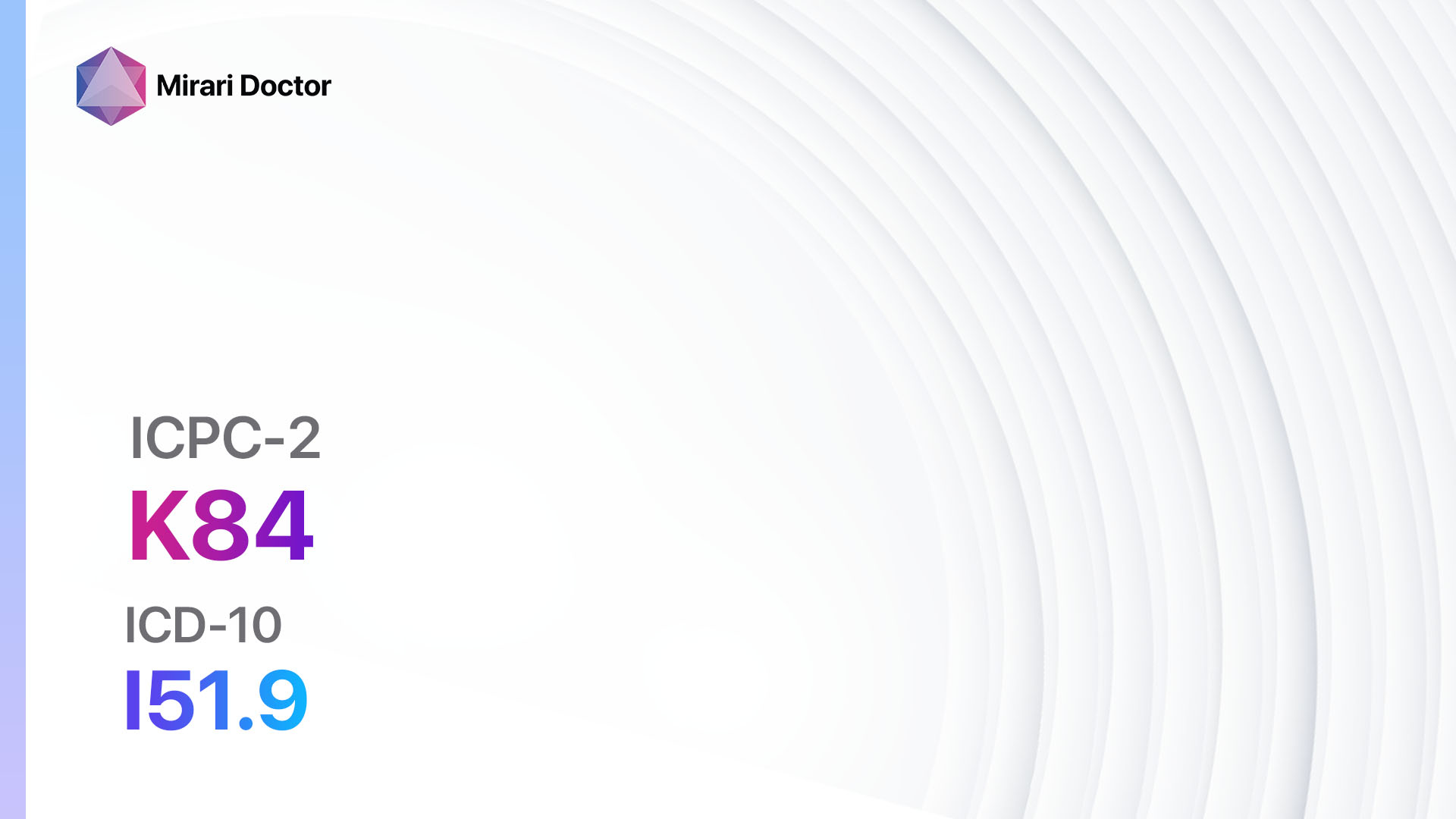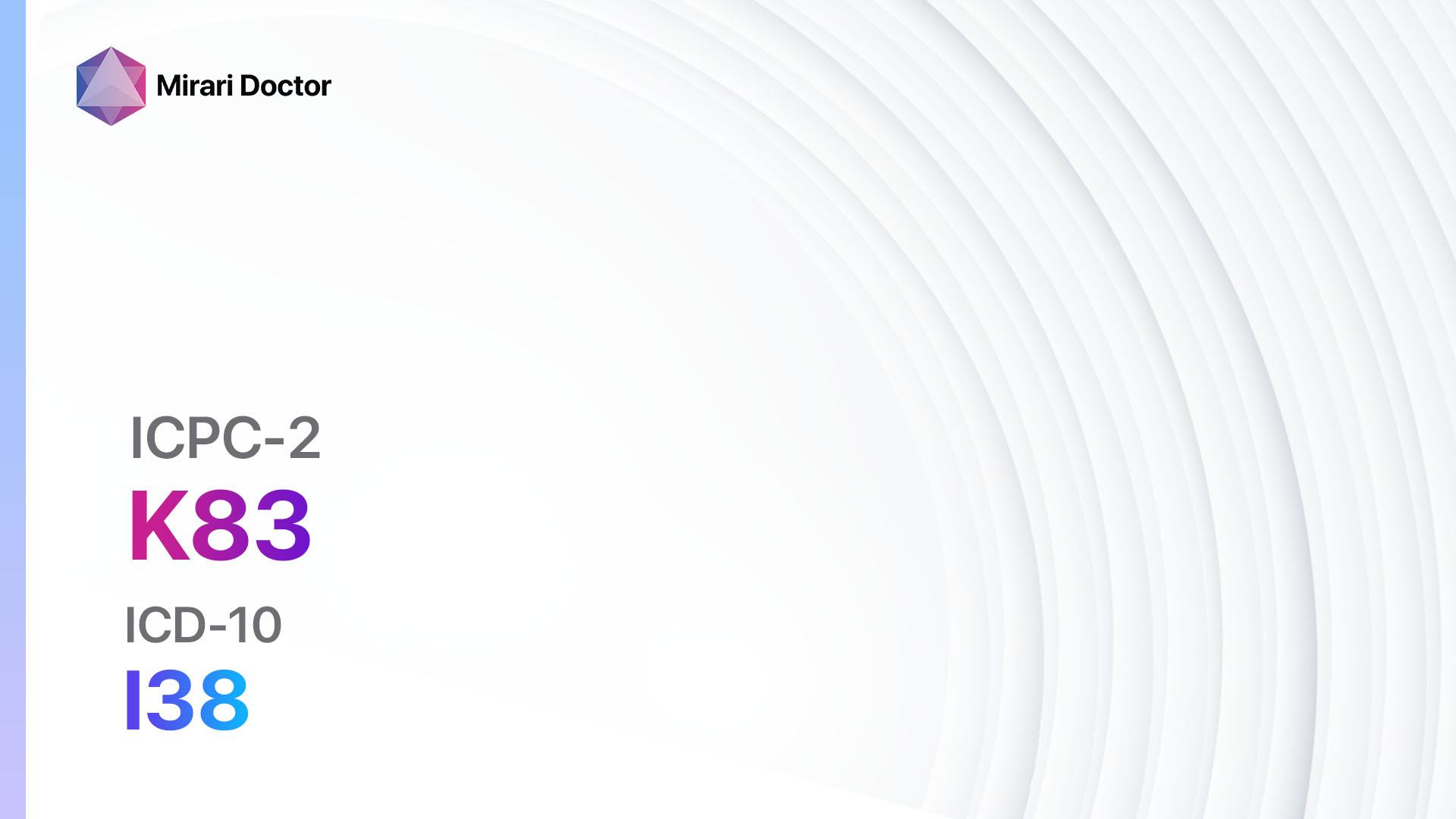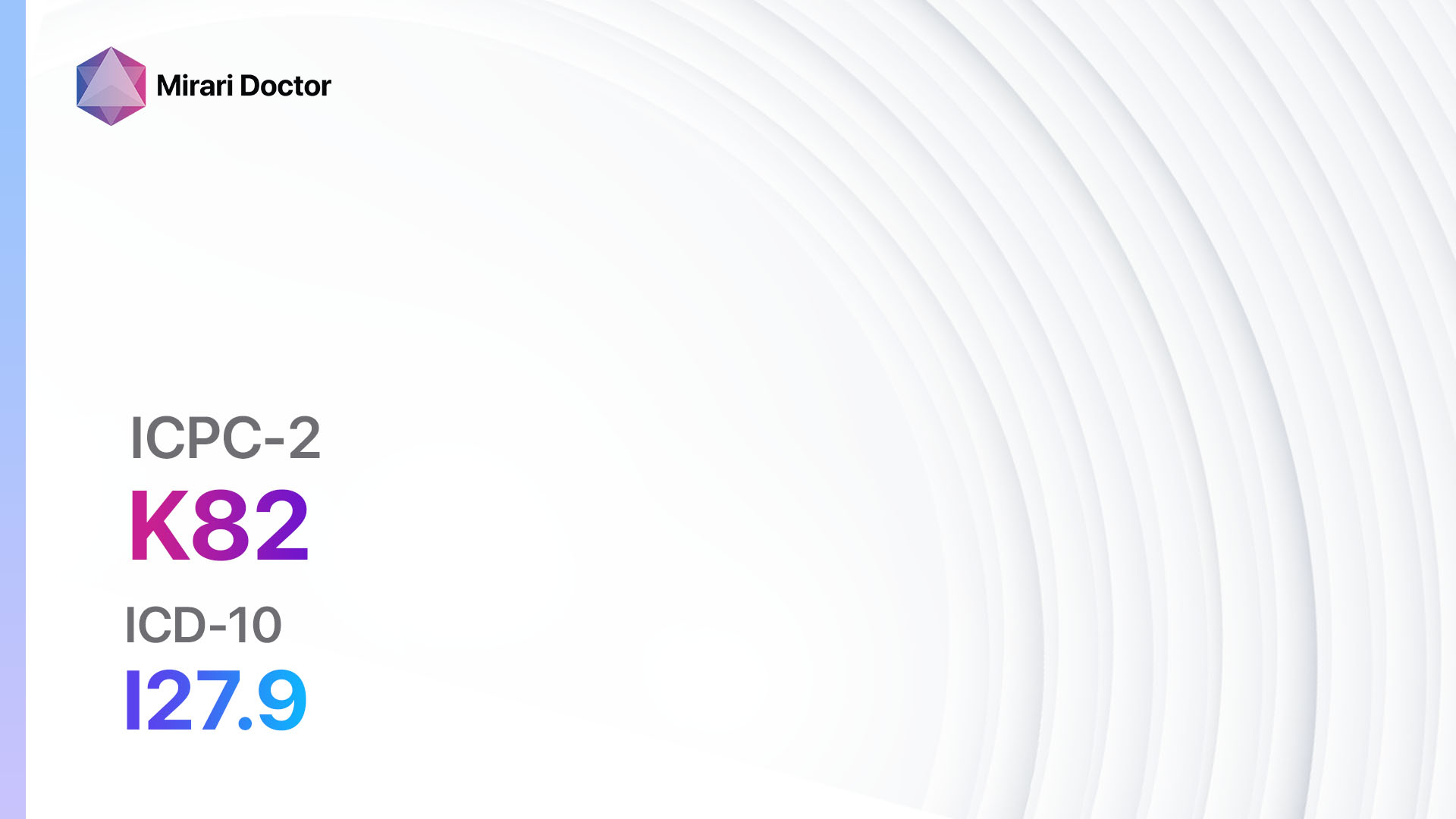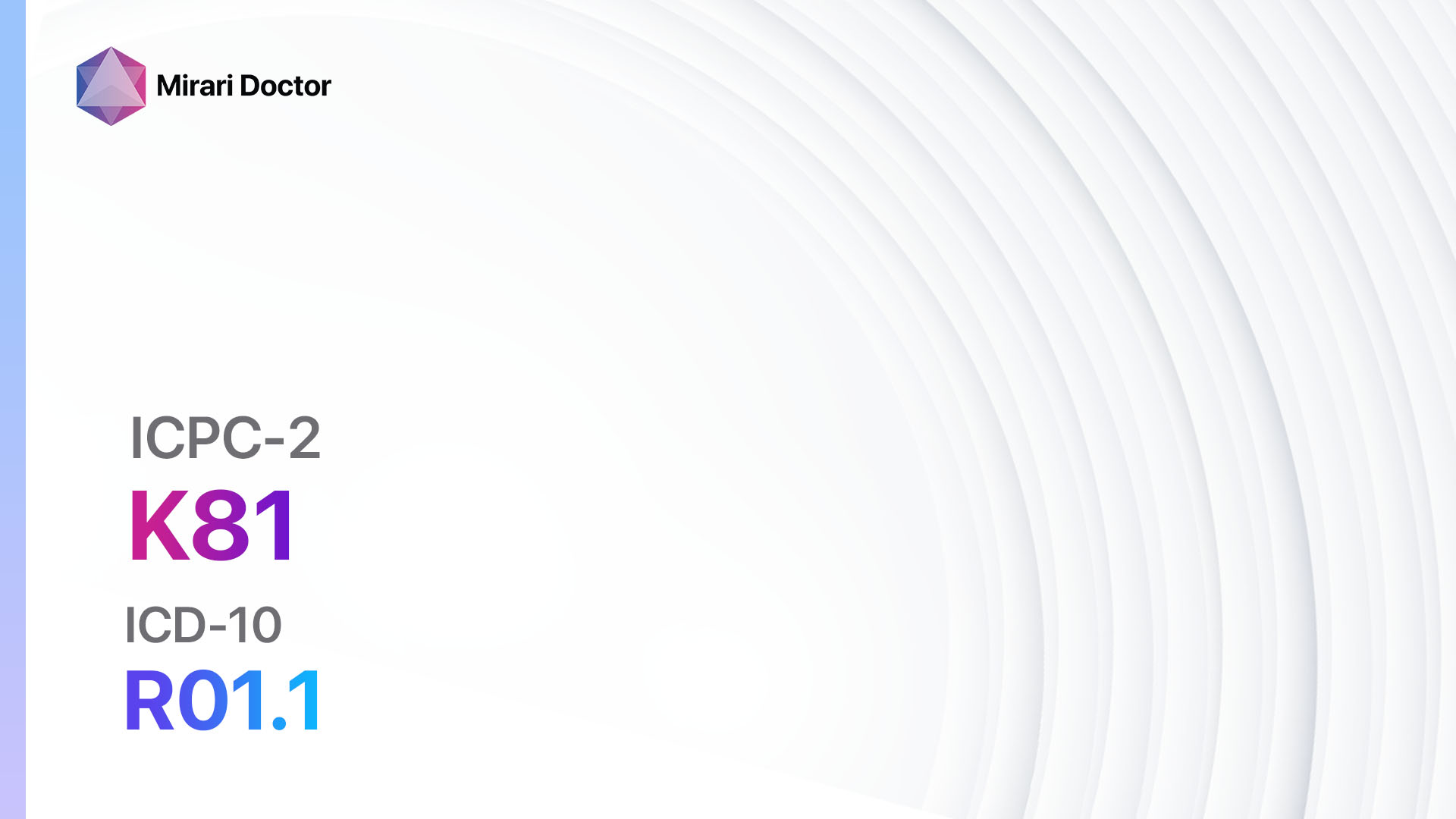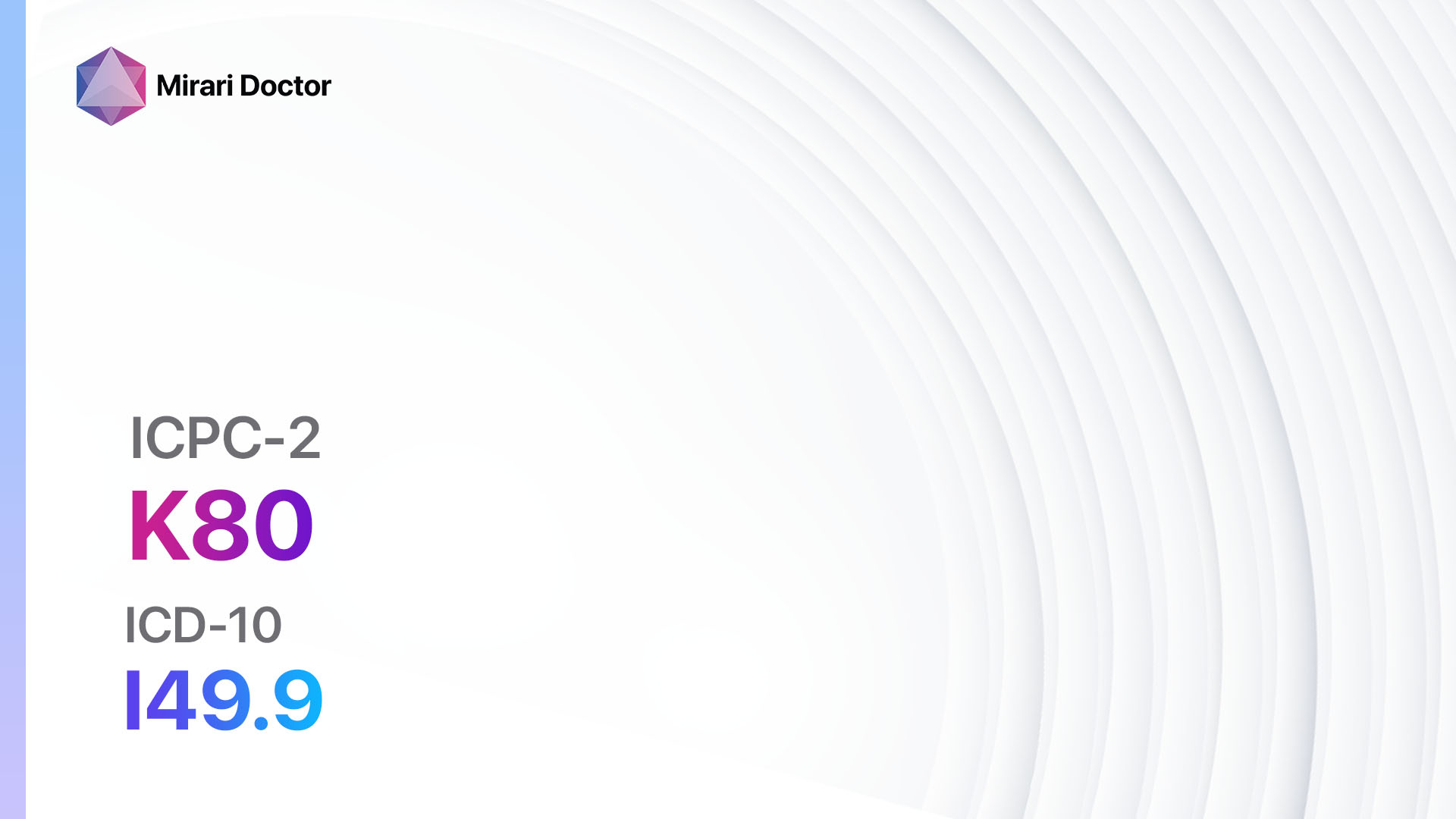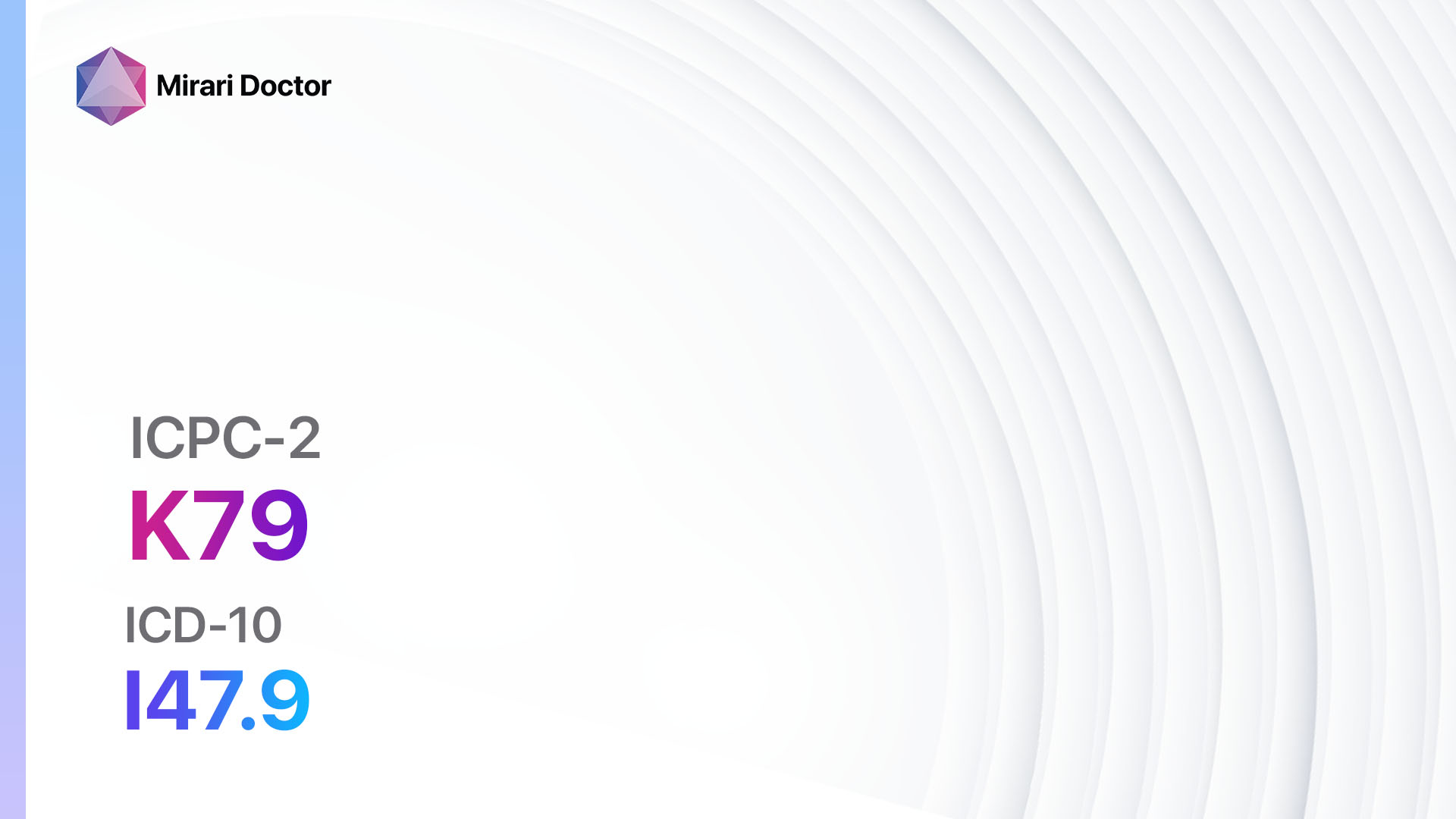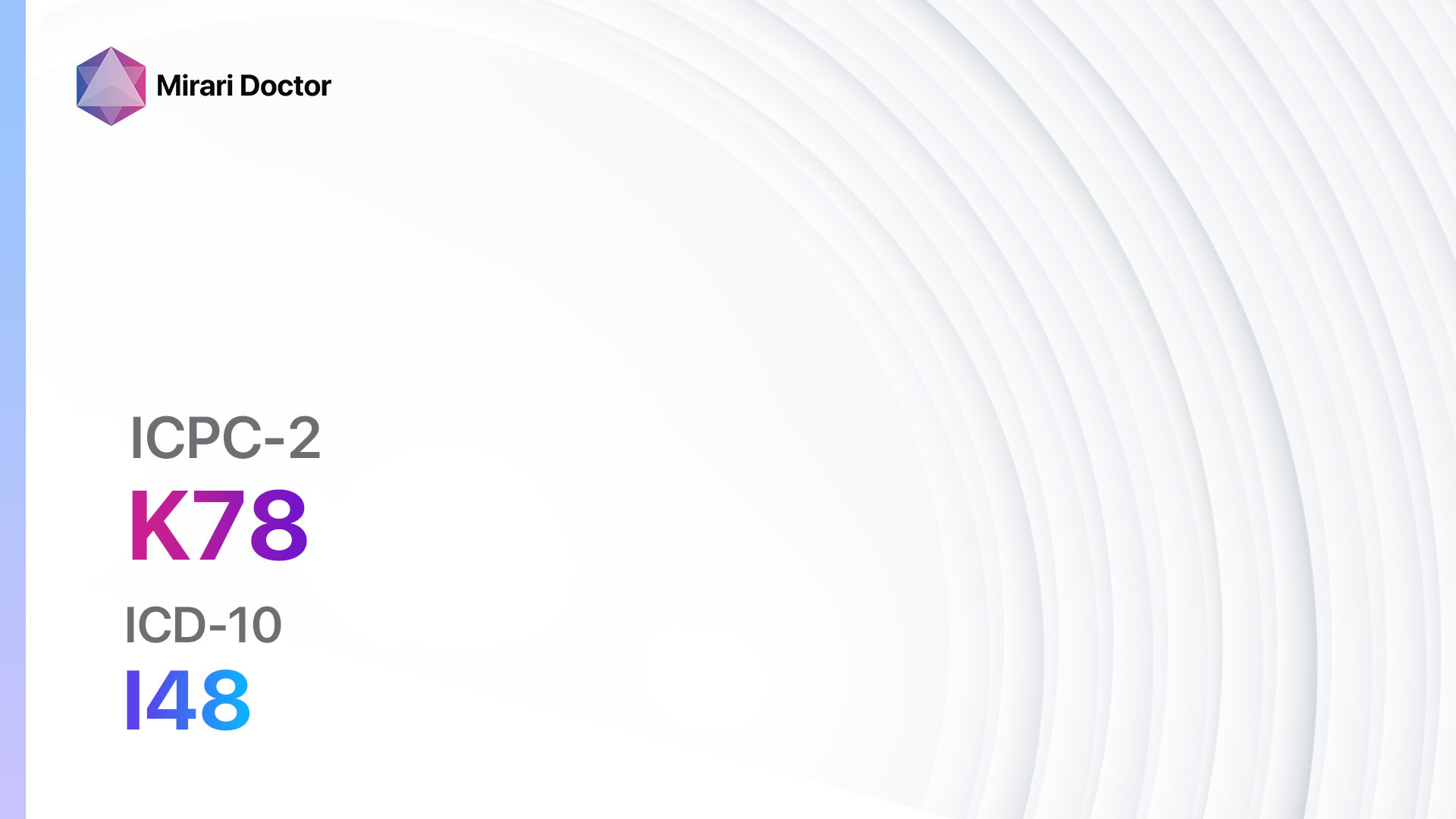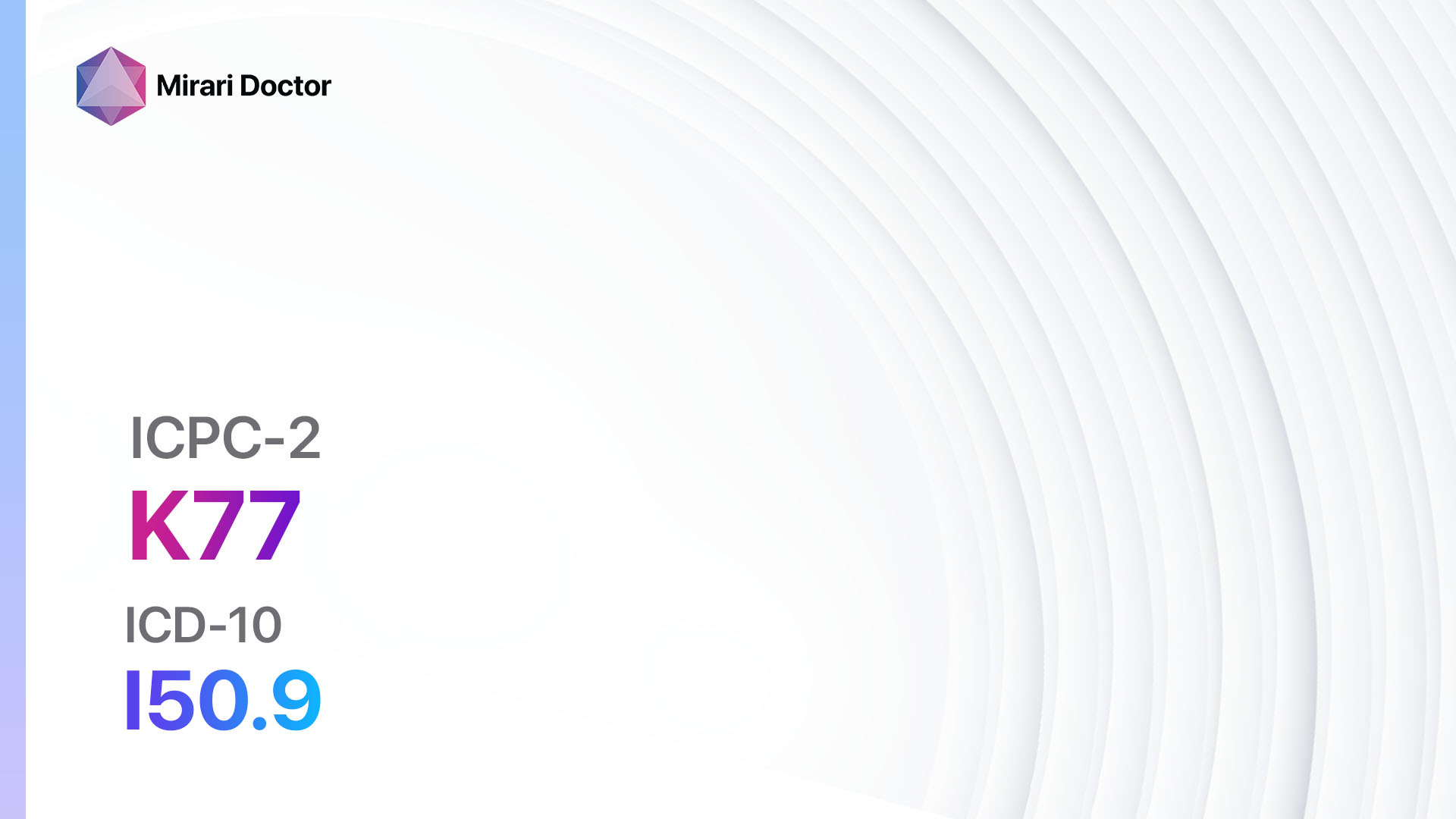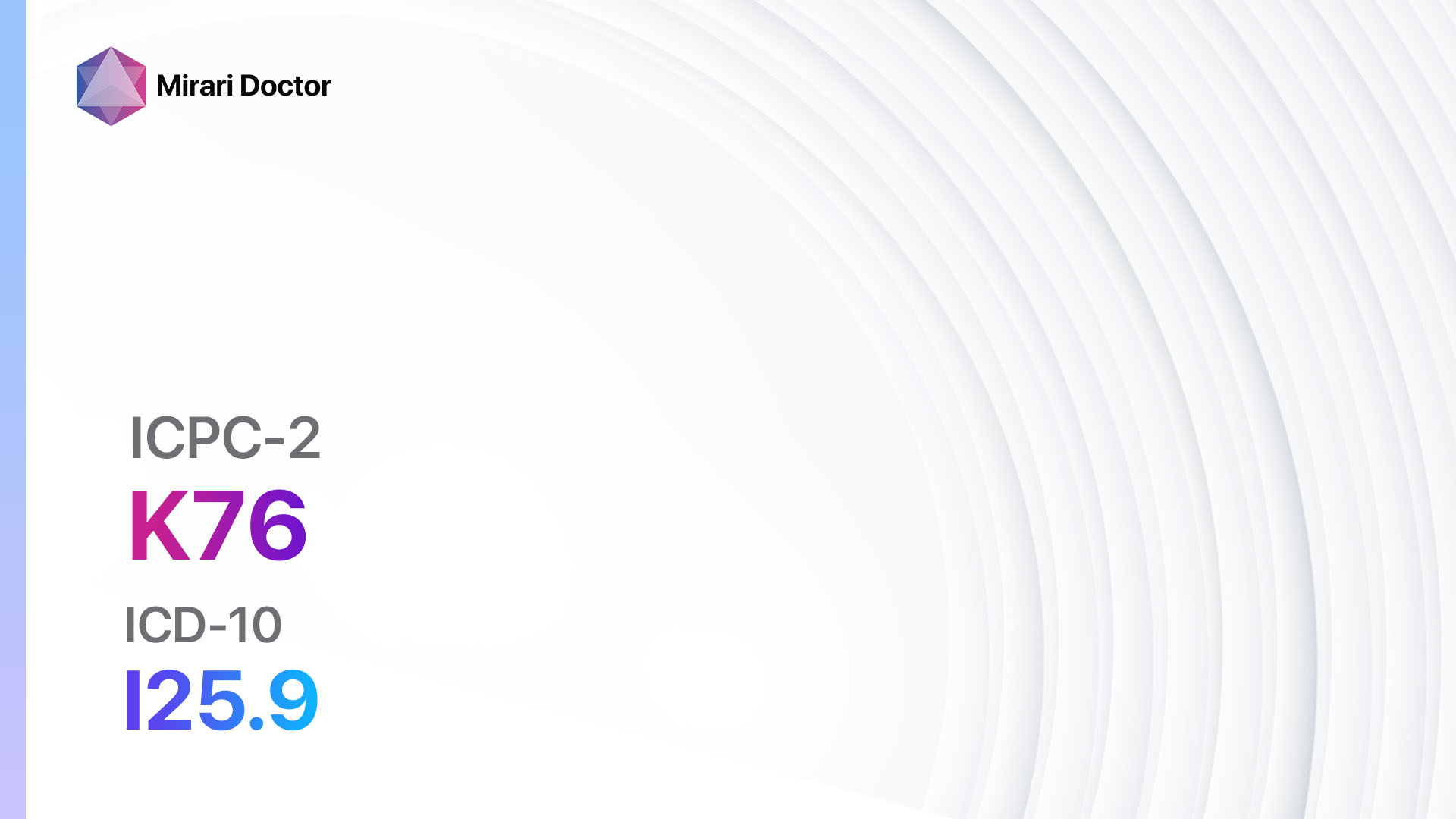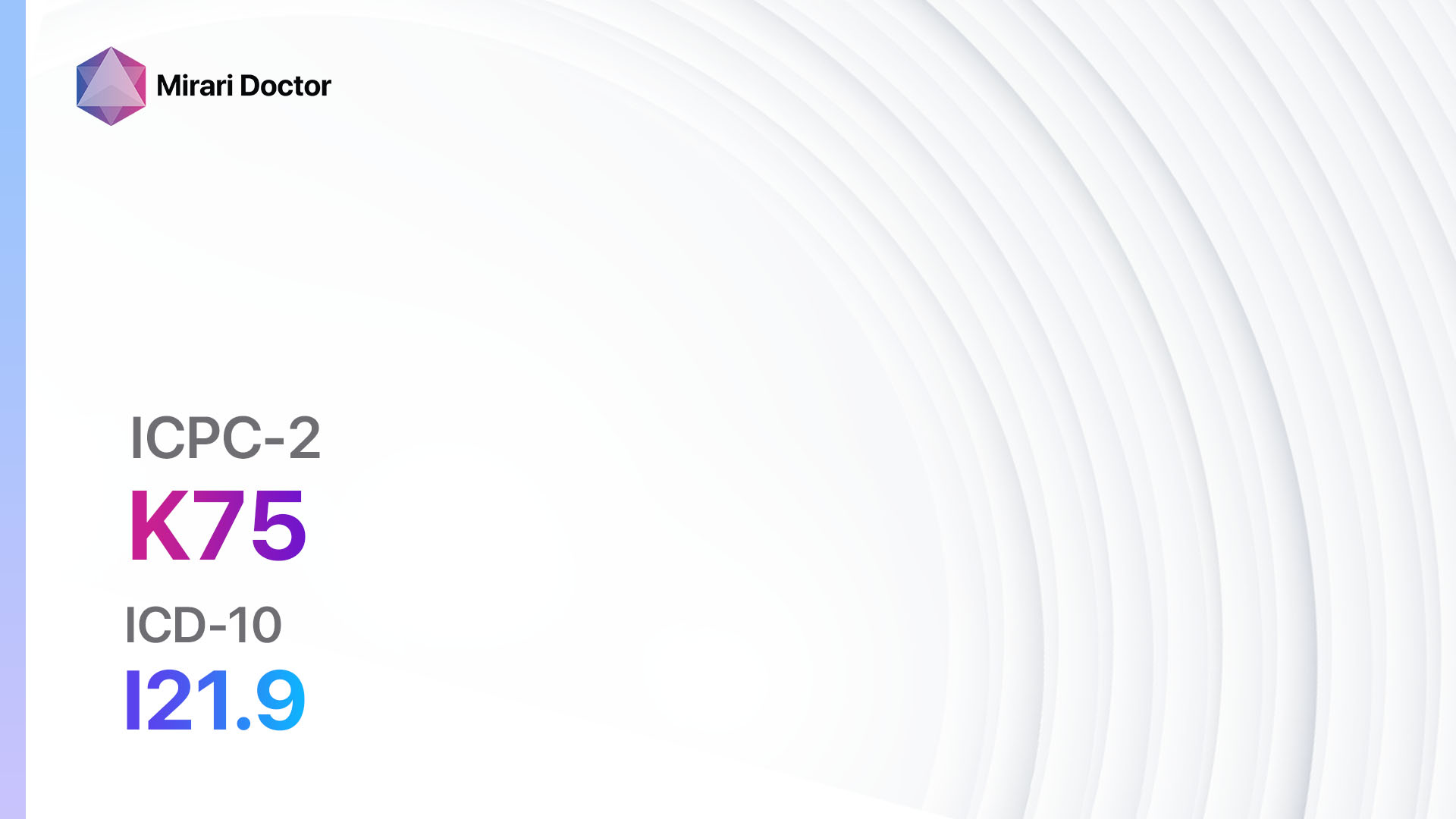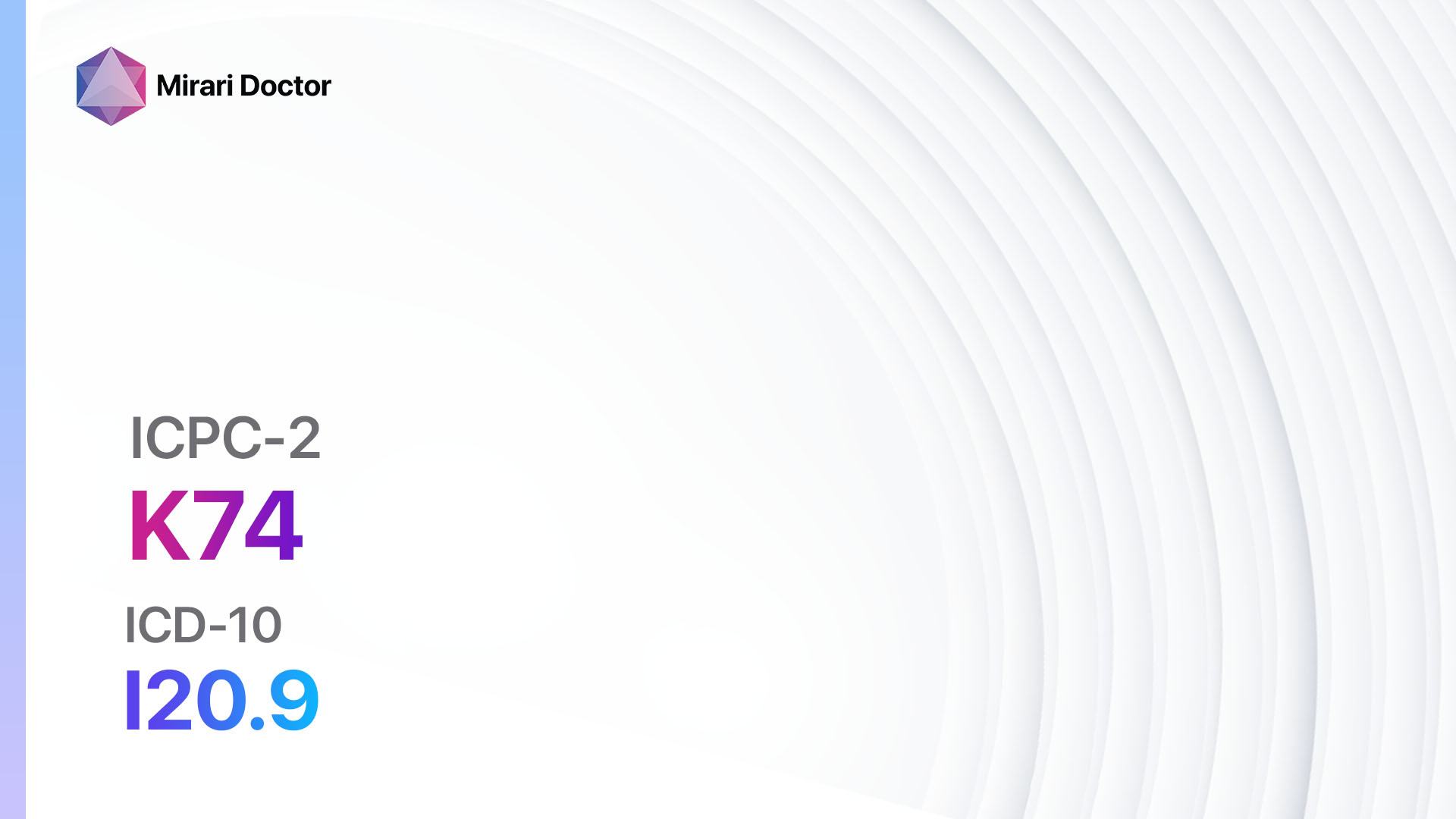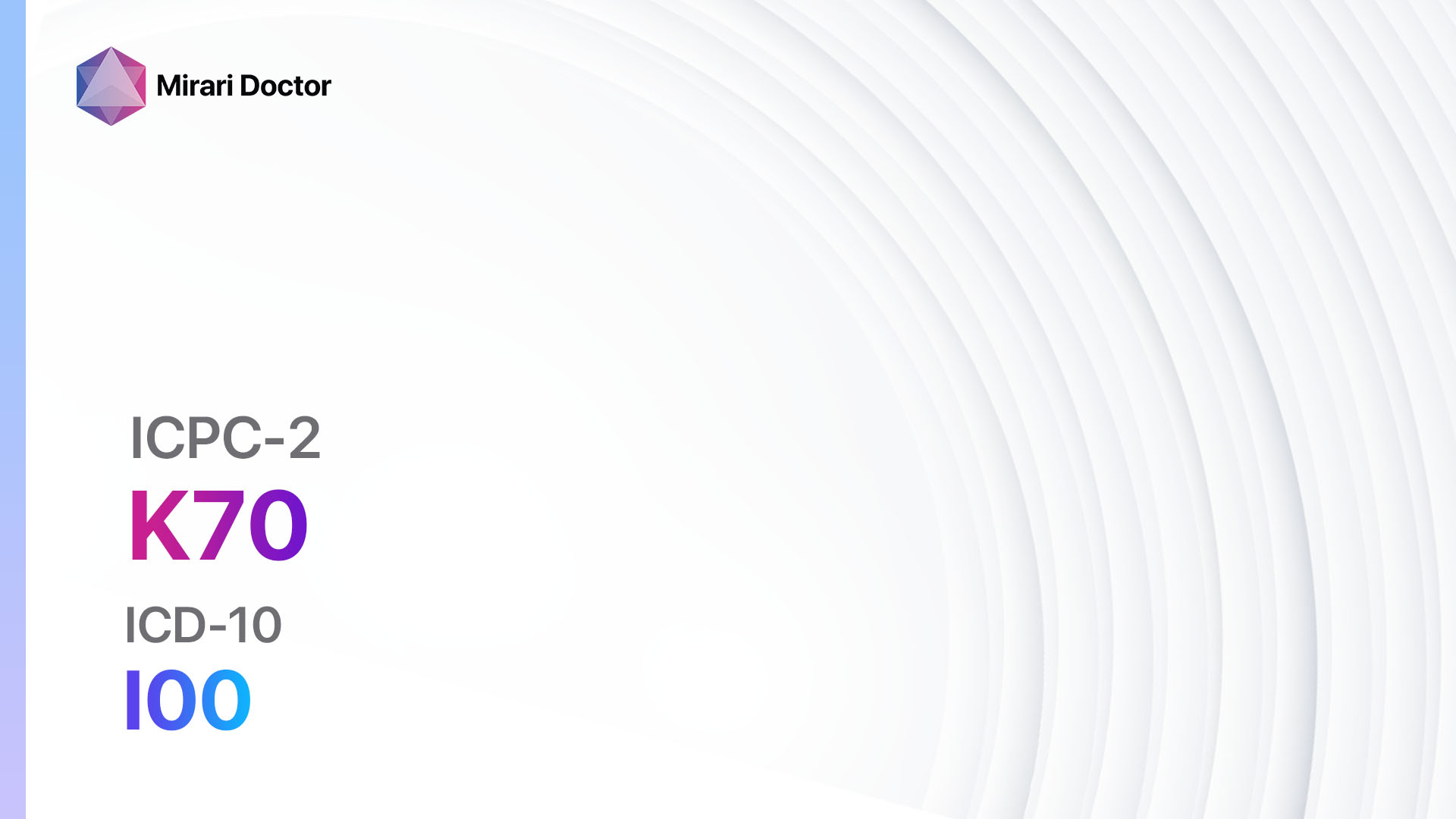
Introduction
Infection of the circulatory system, also known as sepsis or septicemia, is a serious medical condition that occurs when an infection spreads throughout the bloodstream. It can lead to life-threatening complications if not promptly diagnosed and treated[1]. The aim of this guide is to provide healthcare professionals with a comprehensive overview of the symptoms, causes, diagnostic steps, possible interventions, and patient education related to infection of the circulatory system.
Codes
- ICPC-2 Code: K70 Infection of circulatory system
- ICD-10 Code: I00 Rheumatic fever without mention of heart involvement
Symptoms
- Fever: Patients may experience a high body temperature, often above 101°F (38.3°C)[2].
- Chills: Patients may feel cold and experience shivering or shaking[3].
- Rapid heart rate: Tachycardia is a common symptom of infection of the circulatory system[4].
- Rapid breathing: Patients may have an increased respiratory rate[5].
- Hypotension: Low blood pressure is a significant symptom of sepsis[6].
- Confusion or disorientation: Patients may appear confused or have difficulty concentrating[7].
- Skin rash or discoloration: The skin may appear mottled or have a bluish tint[8].
- Decreased urine output: Patients may produce less urine than usual[9].
Causes
- Bacterial infection: The most common cause of infection of the circulatory system is a bacterial infection, such as pneumonia, urinary tract infection, or cellulitis[10].
- Viral infection: In some cases, viral infections, such as influenza or COVID-19, can lead to sepsis.
- Fungal infection: Fungal infections, such as candidiasis or aspergillosis, can also cause sepsis.
- Parasitic infection: Although rare, parasitic infections, such as malaria or babesiosis, can result in septicemia.
Diagnostic Steps
Medical History
- Obtain a detailed medical history, including any recent infections, hospitalizations, or surgeries.
- Assess for risk factors, such as a weakened immune system, chronic illnesses, or recent use of immunosuppressive medications.
- Inquire about symptoms, including fever, chills, rapid heart rate, and hypotension.
Physical Examination
- Perform a thorough physical examination, paying close attention to vital signs, skin appearance, and mental status.
- Check for signs of infection, such as localized redness, swelling, or tenderness.
- Evaluate for signs of organ dysfunction, including decreased urine output or abnormal liver function tests.
Laboratory Tests
- Complete blood count (CBC): Assess for leukocytosis or leukopenia, which may indicate an infection.
- Blood cultures: Collect blood samples to identify the causative organism.
- C-reactive protein (CRP) and procalcitonin levels: Elevated levels may indicate the presence of an infection.
- Coagulation profile: Evaluate for abnormal clotting parameters, such as prolonged prothrombin time or activated partial thromboplastin time.
- Liver function tests: Assess liver enzymes and bilirubin levels for signs of liver dysfunction.
- Kidney function tests: Measure serum creatinine and blood urea nitrogen levels to evaluate renal function.
Diagnostic Imaging
- Chest X-ray: Evaluate for signs of pneumonia or other respiratory infections.
- Abdominal ultrasound: Assess for the presence of abscesses or other intra-abdominal infections.
- CT scan: Provide detailed imaging of the chest, abdomen, or pelvis to identify the source of infection.
- Echocardiogram: Evaluate cardiac function and assess for infective endocarditis.
Other Tests
- Urine culture: Collect a urine sample to identify any urinary tract infections.
- Lumbar puncture: Perform a spinal tap if meningitis is suspected.
- Wound culture: Collect samples from any infected wounds for microbiological analysis.
Follow-up and Patient Education
- Monitor the patient’s response to treatment and adjust interventions as necessary.
- Educate the patient and their family about the importance of completing the full course of antibiotics.
- Provide information on signs and symptoms of infection recurrence or complications.
- Encourage the patient to seek medical attention if symptoms worsen or new symptoms develop.
Possible Interventions
Traditional Interventions
Medications:
Top 5 drugs for infection of the circulatory system:
- Broad-spectrum antibiotics: (e.g., Ceftriaxone, Vancomycin)
- Cost: Varies depending on the specific antibiotic and healthcare setting.
- Contraindications: Known hypersensitivity to the antibiotic.
- Side effects: Nausea, diarrhea, allergic reactions.
- Severe side effects: Clostridium difficile infection, Stevens-Johnson syndrome.
- Drug interactions: Other medications that may affect renal function or increase the risk of bleeding.
- Warning: Appropriate dosing and monitoring of renal function are essential.
- Vasopressors: (e.g., Norepinephrine, Dopamine)
- Cost: Varies depending on the specific vasopressor and healthcare setting.
- Contraindications: Hypersensitivity, severe hypovolemia.
- Side effects: Increased blood pressure, arrhythmias.
- Severe side effects: Tissue necrosis, myocardial ischemia.
- Drug interactions: Other medications that may affect blood pressure or cardiac function.
- Warning: Continuous monitoring of blood pressure and cardiac function is necessary.
- Corticosteroids: (e.g., Hydrocortisone, Methylprednisolone)
- Cost: Varies depending on the specific corticosteroid and healthcare setting.
- Contraindications: Active infections, uncontrolled diabetes.
- Side effects: Increased risk of infection, fluid retention.
- Severe side effects: Adrenal insufficiency, osteoporosis.
- Drug interactions: Other medications that may affect immune function or increase the risk of bleeding.
- Warning: Gradual tapering of corticosteroid dose is required to prevent adrenal crisis.
- Antipyretics: (e.g., Acetaminophen, Ibuprofen)
- Cost: Varies depending on the specific antipyretic and healthcare setting.
- Contraindications: Hypersensitivity, severe liver disease.
- Side effects: Nausea, stomach pain, rash.
- Severe side effects: Liver toxicity, allergic reactions.
- Drug interactions: Other medications that may affect liver function or increase the risk of bleeding.
- Warning: Avoid exceeding the recommended daily dose of acetaminophen to prevent liver damage.
- Antifungal agents: (e.g., Fluconazole, Caspofungin)
- Cost: Varies depending on the specific antifungal agent and healthcare setting.
- Contraindications: Known hypersensitivity to the antifungal agent.
- Side effects: Nausea, vomiting, headache.
- Severe side effects: Hepatotoxicity, allergic reactions.
- Drug interactions: Other medications that may affect liver function or increase the risk of bleeding.
- Warning: Monitor liver function and consider dose adjustments in patients with hepatic impairment.
Surgical Procedures:
- Drainage of abscesses: Surgical intervention may be necessary to drain localized infections.
- Debridement of infected tissue: Removal of infected tissue may be required to control the spread of infection.
- Source control procedures: Surgical procedures, such as appendectomy or cholecystectomy, may be necessary to remove the source of infection.
Alternative Interventions
- Probiotics: May help restore the balance of gut bacteria and support immune function. Cost: Varies depending on the specific probiotic supplement.
- Intravenous vitamin C: Some studies suggest that high-dose vitamin C may have a beneficial effect on sepsis outcomes. Cost: Varies depending on the healthcare setting and availability.
- Herbal supplements: Certain herbs, such as echinacea or garlic, may have immune-boosting properties. Cost: Varies depending on the specific supplement.
- Hyperbaric oxygen therapy: Involves breathing pure oxygen in a pressurized chamber to increase oxygen delivery to tissues. Cost: $200-$300 per session.
- Immunoglobulin therapy: Administration of antibodies derived from human plasma to enhance the immune response. Cost: Varies depending on the specific immunoglobulin product and healthcare setting.
Lifestyle Interventions
- Adequate hydration: Encourage the patient to drink plenty of fluids to maintain hydration and support immune function. Cost: Varies depending on the availability of clean drinking water.
- Balanced diet: Emphasize the importance of consuming a nutritious diet rich in fruits, vegetables, and lean proteins to support overall health and immune function. Cost: Varies depending on food choices and availability.
- Regular exercise: Encourage the patient to engage in regular physical activity, as it can help improve circulation and strengthen the immune system. Cost: Varies depending on the chosen form of exercise.
- Stress management: Teach stress reduction techniques, such as deep breathing exercises or meditation, to help support immune function. Cost: Varies depending on the chosen method of stress management.
- Good hygiene practices: Emphasize the importance of handwashing and proper hygiene to prevent the spread of infections. Cost: Varies depending on the availability of soap and water.
It is important to note that the cost ranges provided are approximate and may vary depending on the location and availability of the interventions.
Mirari Cold Plasma Alternative Intervention
Understanding Mirari Cold Plasma
- Safe and Non-Invasive Treatment: Mirari Cold Plasma is a safe and non-invasive treatment option for various skin conditions. It does not require incisions, minimizing the risk of scarring, bleeding, or tissue damage.
- Efficient Extraction of Foreign Bodies: Mirari Cold Plasma facilitates the removal of foreign bodies from the skin by degrading and dissociating organic matter, allowing easier access and extraction.
- Pain Reduction and Comfort: Mirari Cold Plasma has a local analgesic effect, providing pain relief during the treatment, making it more comfortable for the patient.
- Reduced Risk of Infection: Mirari Cold Plasma has antimicrobial properties, effectively killing bacteria and reducing the risk of infection.
- Accelerated Healing and Minimal Scarring: Mirari Cold Plasma stimulates wound healing and tissue regeneration, reducing healing time and minimizing the formation of scars.
Mirari Cold Plasma Prescription
Video instructions for using Mirari Cold Plasma Device – K70 Infection of circulatory system (ICD-10:I00)
| Mild | Moderate | Severe |
| Mode setting: 1 (Infection) Location: 5 (Lungs) Morning: 15 minutes, Evening: 15 minutes | Mode setting: 1 (Infection) Location: 5 (Lungs) Morning: 30 minutes, Lunch: 30 minutes, Evening: 30 minutes | Mode setting: 1 (Infection) Location: 5 (Lungs) Morning: 30 minutes, Lunch: 30 minutes, Evening: 30 minutes |
| Mode setting: 2 (Wound Healing) Location: 5 (Lungs) Morning: 15 minutes, Evening: 15 minutes | Mode setting: 2 (Wound Healing) Location: 5 (Lungs) Morning: 30 minutes, Lunch: 30 minutes, Evening: 30 minutes | Mode setting: 2 (Wound Healing) Location:5 (Lungs) Morning: 30 minutes, Lunch: 30 minutes, Evening: 30 minutes |
| Mode setting: 7 (Immunotherapy) Location: 1 (Sacrum) Morning: 15 minutes, Evening: 15 minutes | Mode setting: 7 (Immunotherapy) Location: 1 (Sacrum) Morning: 30 minutes, Lunch: 30 minutes, Evening: 30 minutes | Mode setting: 7 (Immunotherapy) Location: 1 (Sacrum) Morning: 30 minutes, Lunch: 30 minutes, Evening: 30 minutes |
| Mode setting:7 (Immunotherapy) Location:4 (Heart, Bile & Pancreas) Morning: 15 minutes, Evening: 15 minutes | Mode setting:7 (Immunotherapy) Location:4 (Heart, Bile & Pancreas) Morning: 30 minutes, Lunch: 30 minutes, Evening: 30 minutes | Mode setting:7 (Immunotherapy) Location:4 (Heart, Bile & Pancreas) Morning: 30 minutes, Lunch: 30 minutes, Evening: 30 minutes |
| Total Morning:60minutesapprox.$10USD, Evening:60minutesapprox.$10USD | Total Morning:120minutesapprox.$20USD, Lunch:120minutesapprox. $20 USD, Evening:120minutesapprox. $20 USD, | Total Morning:120minutesapprox.$20USD, Lunch:120minutesapprox. $20 USD, Evening:120minutesapprox. $20 USD, |
| Usualtreatmentfor7-60daysapprox.$140USD–$1200USD | Usualtreatmentfor6-8weeksapprox.$2,520USD–$3,360USD | Usualtreatmentfor3-6monthsapprox.$5,400USD–$10,800USD |
 |
|
Use the Mirari Cold Plasma device to treat Infection of circulatory system effectively.
WARNING: MIRARI COLD PLASMA IS DESIGNED FOR THE HUMAN BODY WITHOUT ANY ARTIFICIAL OR THIRD PARTY PRODUCTS. USE OF OTHER PRODUCTS IN COMBINATION WITH MIRARI COLD PLASMA MAY CAUSE UNPREDICTABLE EFFECTS, HARM OR INJURY. PLEASE CONSULT A MEDICAL PROFESSIONAL BEFORE COMBINING ANY OTHER PRODUCTS WITH USE OF MIRARI.
Step 1: Cleanse the Skin
- Start by cleaning the affected area of the skin with a gentle cleanser or mild soap and water. Gently pat the area dry with a clean towel.
Step 2: Prepare the Mirari Cold Plasma device
- Ensure that the Mirari Cold Plasma device is fully charged or has fresh batteries as per the manufacturer’s instructions. Make sure the device is clean and in good working condition.
- Switch on the Mirari device using the power button or by following the specific instructions provided with the device.
- Some Mirari devices may have adjustable settings for intensity or treatment duration. Follow the manufacturer’s instructions to select the appropriate settings based on your needs and the recommended guidelines.
Step 3: Apply the Device
- Place the Mirari device in direct contact with the affected area of the skin. Gently glide or hold the device over the skin surface, ensuring even coverage of the area experiencing.
- Slowly move the Mirari device in a circular motion or follow a specific pattern as indicated in the user manual. This helps ensure thorough treatment coverage.
Step 4: Monitor and Assess:
- Keep track of your progress and evaluate the effectiveness of the Mirari device in managing your Infection of circulatory system. If you have any concerns or notice any adverse reactions, consult with your health care professional.
Note
This guide is for informational purposes only and should not replace the advice of a medical professional. Always consult with your healthcare provider or a qualified medical professional for personal advice, diagnosis, or treatment. Do not solely rely on the information presented here for decisions about your health. Use of this information is at your own risk. The authors of this guide, nor any associated entities or platforms, are not responsible for any potential adverse effects or outcomes based on the content.
Mirari Cold Plasma System Disclaimer
- Purpose: The Mirari Cold Plasma System is a Class 2 medical device designed for use by trained healthcare professionals. It is registered for use in Thailand and Vietnam. It is not intended for use outside of these locations.
- Informational Use: The content and information provided with the device are for educational and informational purposes only. They are not a substitute for professional medical advice or care.
- Variable Outcomes: While the device is approved for specific uses, individual outcomes can differ. We do not assert or guarantee specific medical outcomes.
- Consultation: Prior to utilizing the device or making decisions based on its content, it is essential to consult with a Certified Mirari Tele-Therapist and your medical healthcare provider regarding specific protocols.
- Liability: By using this device, users are acknowledging and accepting all potential risks. Neither the manufacturer nor the distributor will be held accountable for any adverse reactions, injuries, or damages stemming from its use.
- Geographical Availability: This device has received approval for designated purposes by the Thai and Vietnam FDA. As of now, outside of Thailand and Vietnam, the Mirari Cold Plasma System is not available for purchase or use.
References
- Singer M, Deutschman CS, Seymour CW, et al. The Third International Consensus Definitions for Sepsis and Septic Shock (Sepsis-3). JAMA. 2016;315(8):801-810. doi:10.1001/jama.2016.0287
- Dellinger RP, Levy MM, Rhodes A, et al. Surviving Sepsis Campaign: international guidelines for management of severe sepsis and septic shock, 2012. Intensive Care Med. 2013;39(2):165-228. doi:10.1007/s00134-012-2769-8
- Bone RC, Balk RA, Cerra FB, et al. Definitions for sepsis and organ failure and guidelines for the use of innovative therapies in sepsis. The ACCP/SCCM Consensus Conference Committee. American College of Chest Physicians/Society of Critical Care Medicine. Chest. 1992;101(6):1644-1655. doi:10.1378/chest.101.6.1644
- Levy MM, Fink MP, Marshall JC, et al. 2001 SCCM/ESICM/ACCP/ATS/SIS International Sepsis Definitions Conference. Crit Care Med. 2003;31(4):1250-1256. doi:10.1097/01.CCM.0000050454.01978.3B
- Angus DC, van der Poll T. Severe sepsis and septic shock. N Engl J Med. 2013;369(9):840-851. doi:10.1056/NEJMra1208623
- Shankar-Hari M, Phillips GS, Levy ML, et al. Developing a New Definition and Assessing New Clinical Criteria for Septic Shock: For the Third International Consensus Definitions for Sepsis and Septic Shock (Sepsis-3). JAMA. 2016;315(8):775-787. doi:10.1001/jama.2016.0289
- Eidelman LA, Putterman D, Putterman C, Sprung CL. The spectrum of septic encephalopathy. Definitions, etiologies, and mortalities. JAMA. 1996;275(6):470-473.
- Kaplan LJ, McPartland K, Santora TA, Trooskin SZ. Start with a subjective assessment of skin temperature to identify hypoperfusion in intensive care unit patients. J Trauma. 2001;50(4):620-628. doi:10.1097/00005373-200104000-00005
- Schrier RW, Wang W. Acute renal failure and sepsis. N Engl J Med. 2004;351(2):159-169. doi:10.1056/NEJMra032401
- Martin GS, Mannino DM, Eaton S, Moss M. The epidemiology of sepsis in the United States from 1979 through 2000. N Engl J Med. 2003;348(16):1546-1554. doi:10.1056/NEJMoa022139
Related articles
Made in USA


